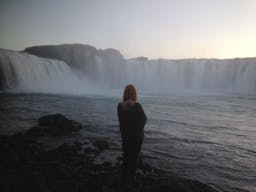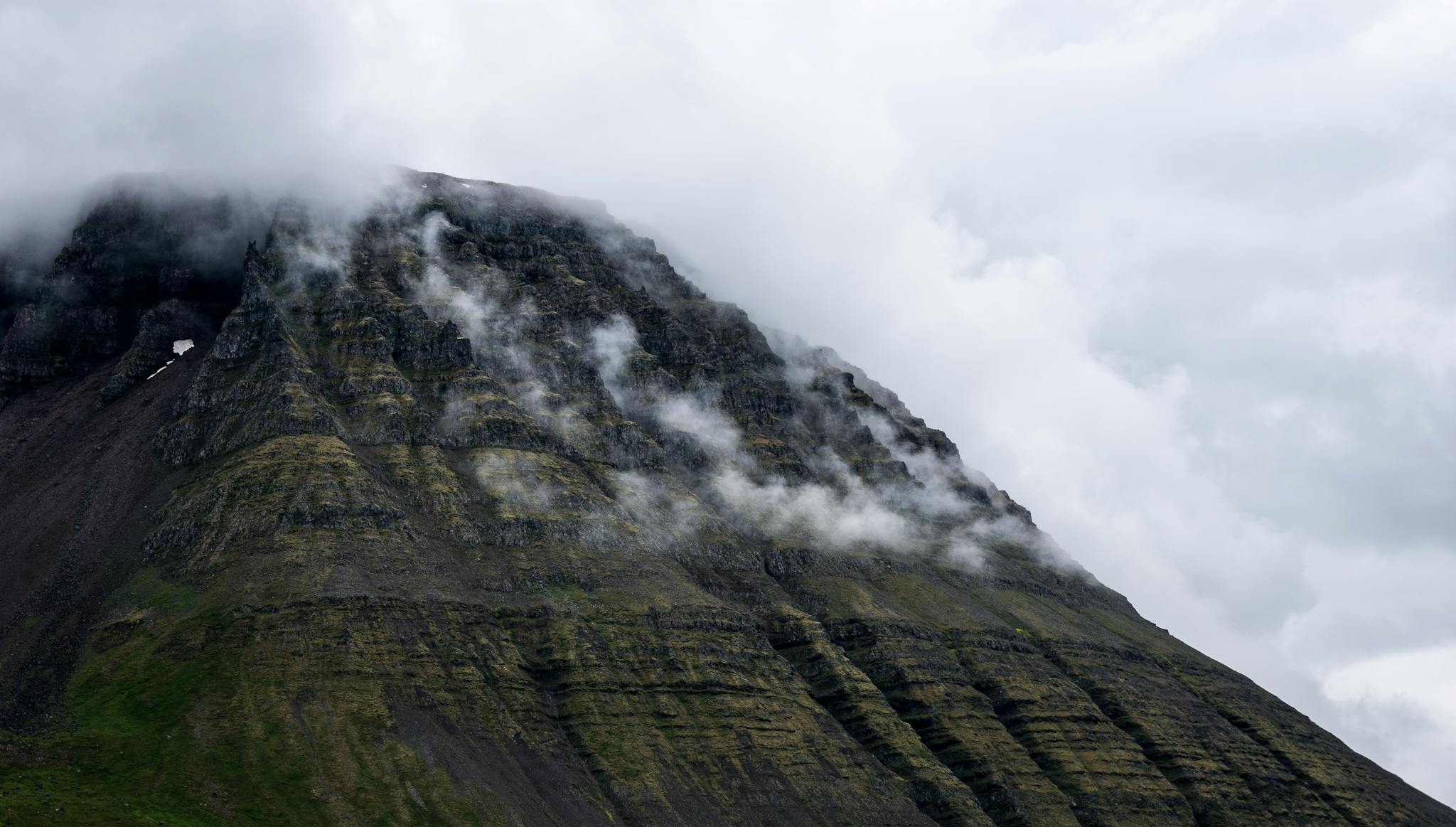
The Westfjords of Iceland: Encountering an Otherworld
I explored the Icelandic Westfjords in the winter. This mystical region has since left a lasting impression on my mind.
The Westfjords are an otherworld, in the winter a gleaming formation of snowy white mountains that sink repeatedly into silvery ocean.
In medieval accounts of otherworlds, characters must move from the primary world of the story into a secondary otherworld by encountering and then moving through elemental boundaries, like bodies of water, forests, areas of dense fog, holes in the earth, or snow storms. Upon entering the otherworld space, beliefs and rules typically accepted within the primary world are suspended.
The otherworld is a mysterious zone, a land of the wild and the hidden and that which cannot be understood. It is a land that cannot always be penetrated, that can choose either to reject you or to allow you in, or even to disappear and reappear at will.
Entering the Icelandic Westfjords means following a long and winding road that, like a fallen curling ribbon, is settled around the base of every fjord, following the land’s natural curvatures and rhythms. The Westfjords are like a strange paw with fingers reaching out, and the liminal road that follows them speaks equally of earth and of water, met on one side by hulking mountain and on the other by silent ocean.
The fluxing movement in and around and out, rhythmically threading deep curving fjords one by one, takes you on a journey that slows down time, that lingers and nestles sometimes into mountain, and then reaches out longingly across sea. To follow the deep winding road through the Westfjords, the road that breathes in and out with the curves of the land, is a journey into an otherworld space.
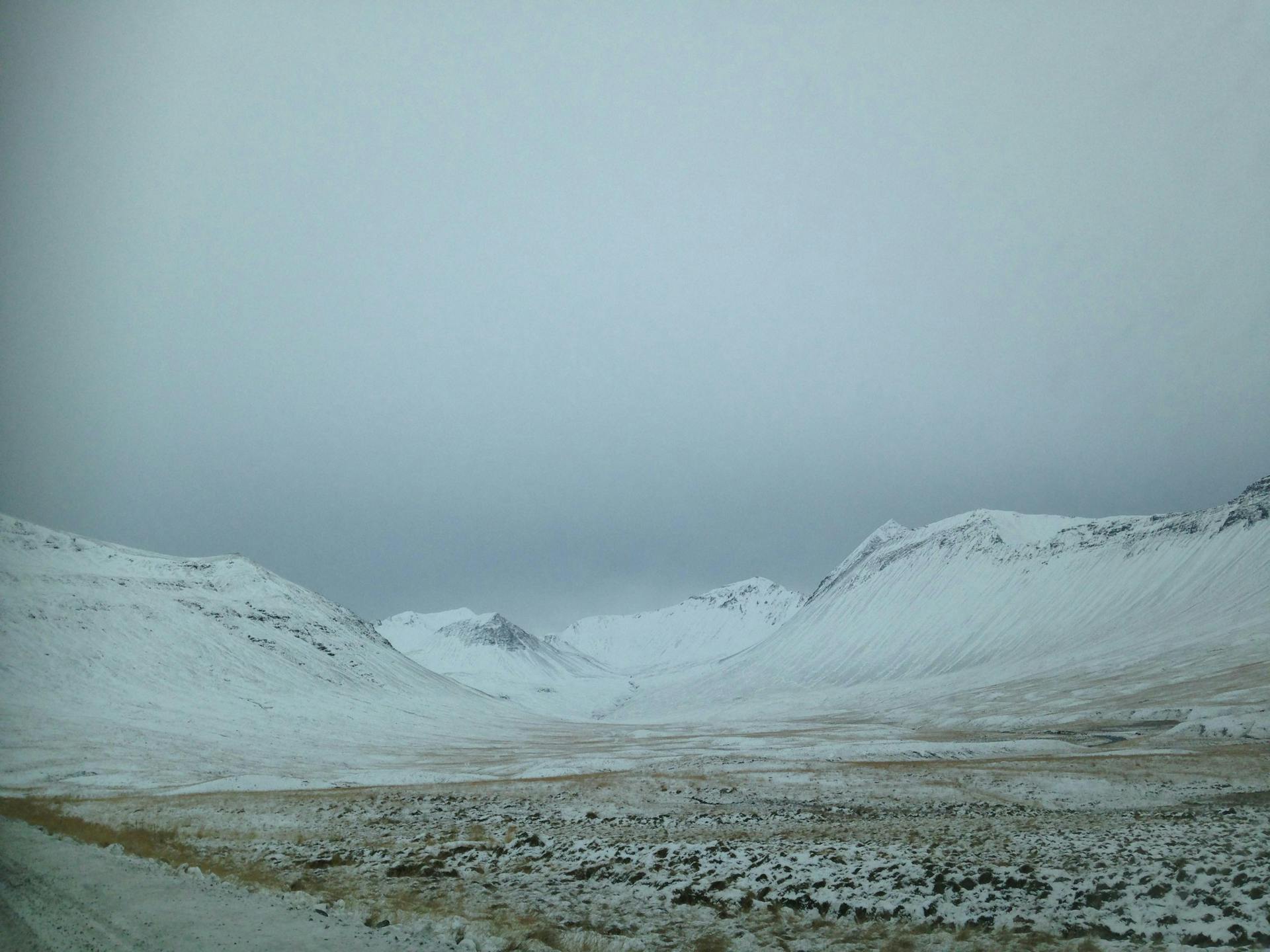 November in the Westfjords. Taken by Pearl Jackson-Payen
November in the Westfjords. Taken by Pearl Jackson-Payen
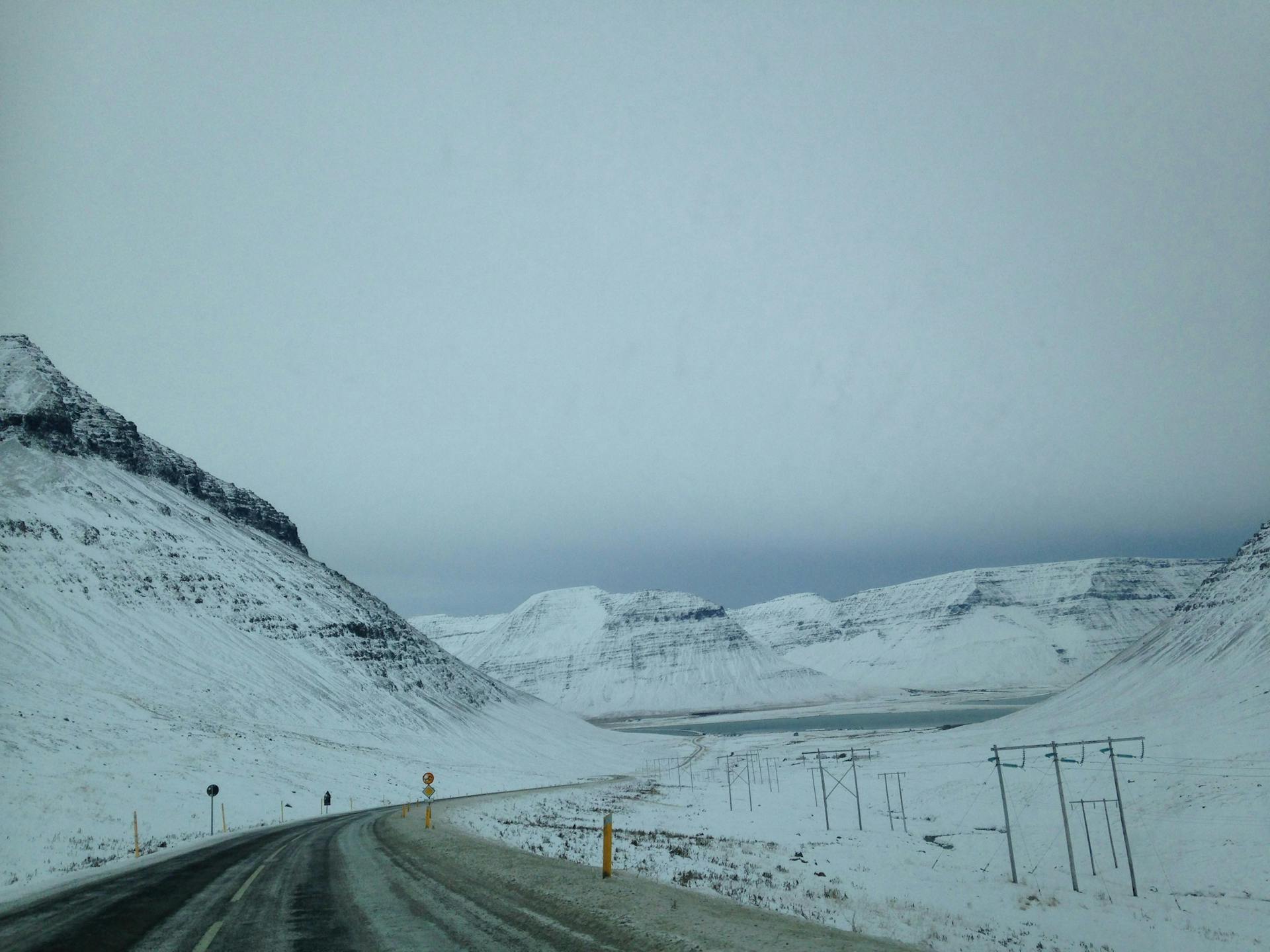 Taken by Pearl Jackson-Payen
Taken by Pearl Jackson-Payen
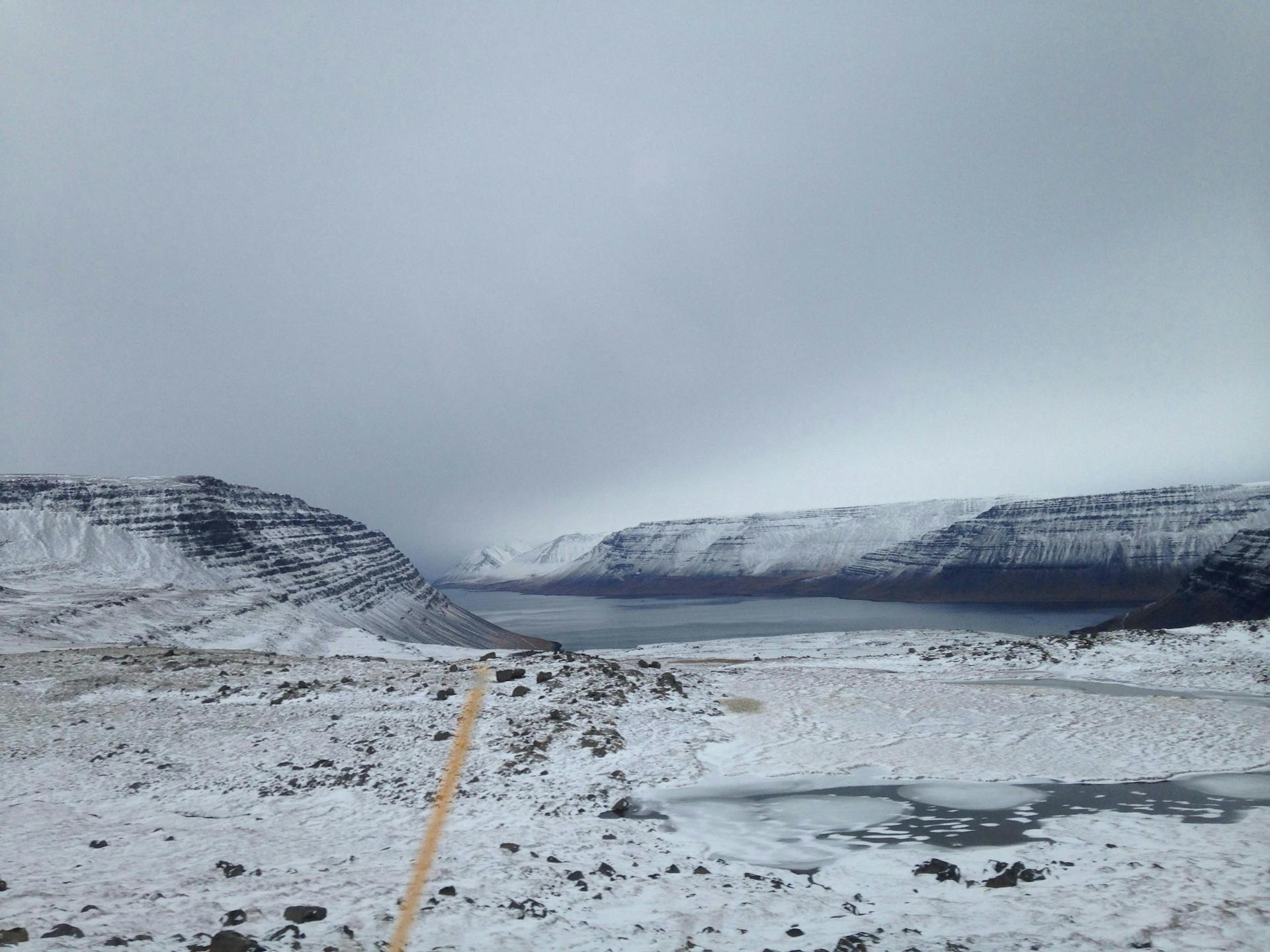 Taken by Pearl Jackson-Payen
Taken by Pearl Jackson-Payen
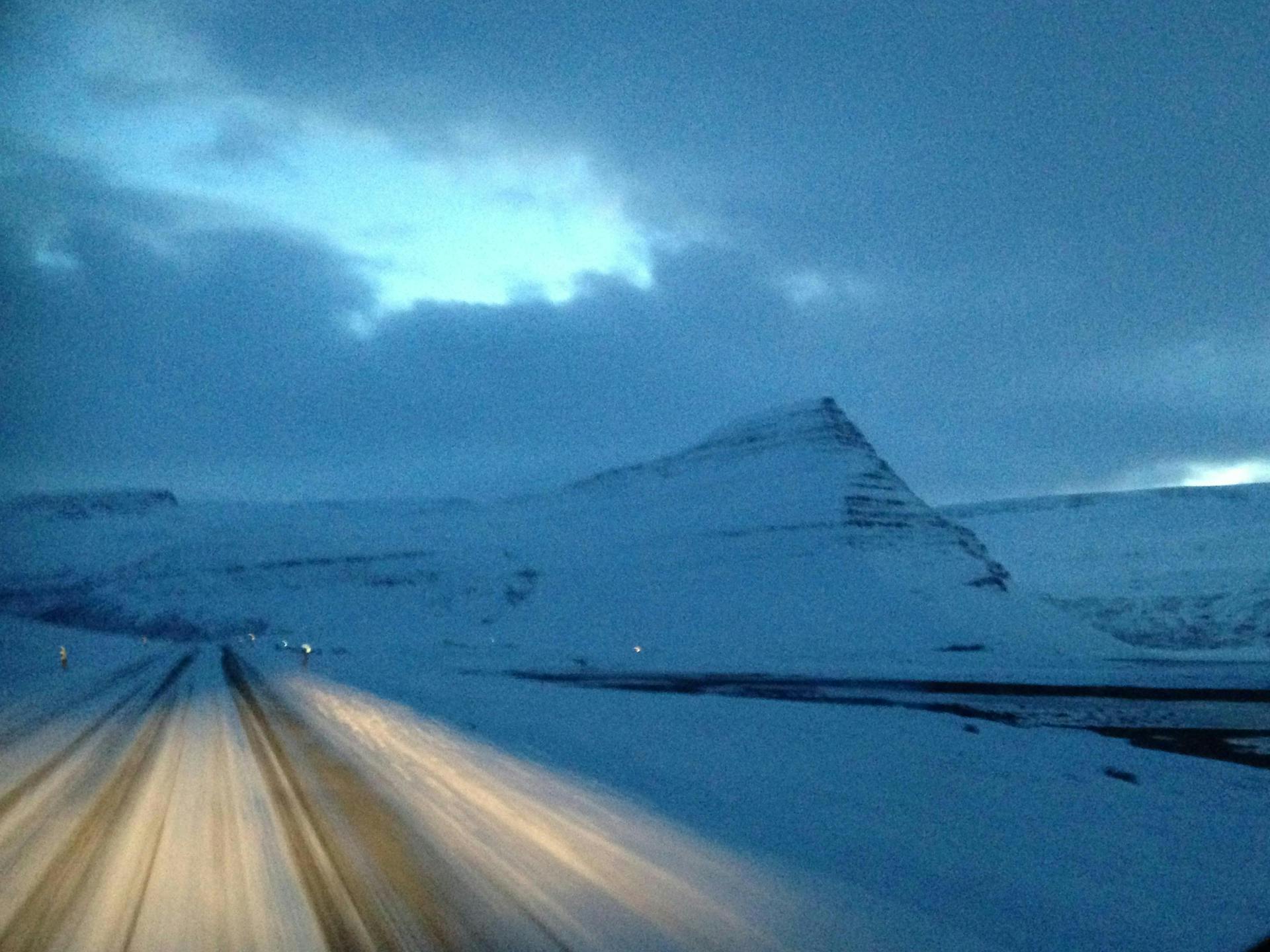 Following route 61 into the Westfjords. Taken by Pearl Jackson-Payen
Following route 61 into the Westfjords. Taken by Pearl Jackson-Payen
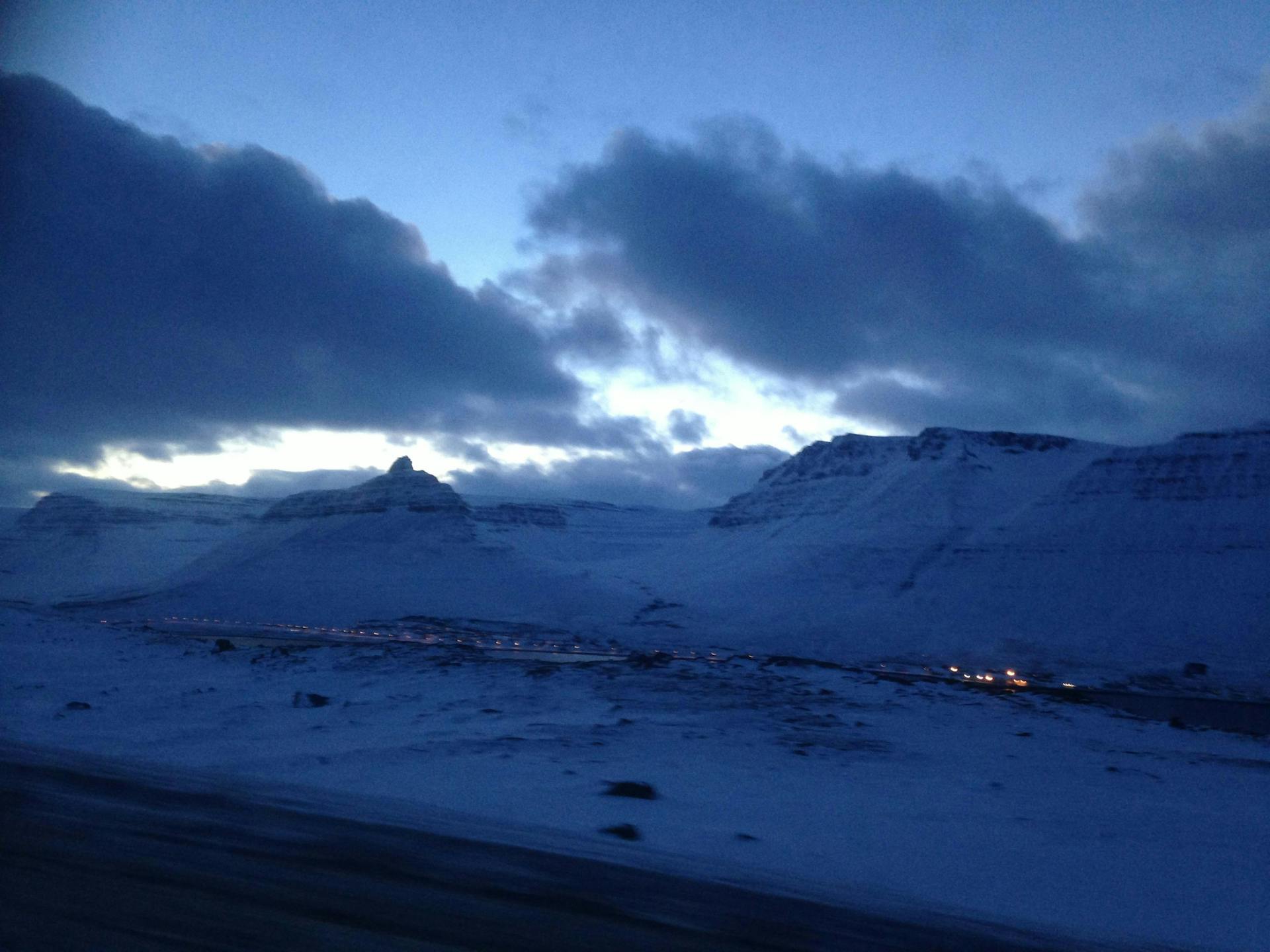 Taken by Pearl Jackson-Payen
Taken by Pearl Jackson-Payen
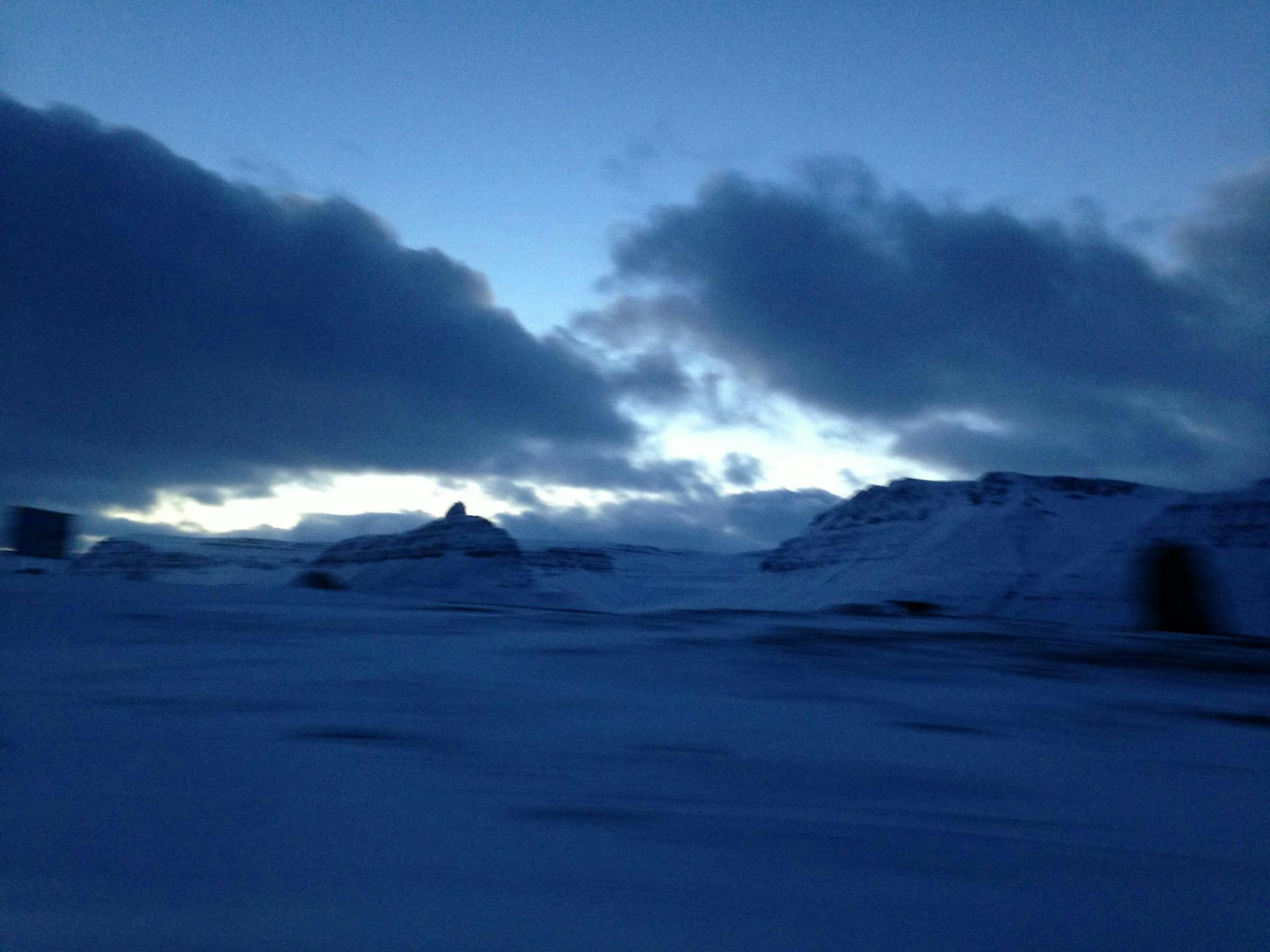 Taken by Pearl Jackson-Payen
Taken by Pearl Jackson-Payen
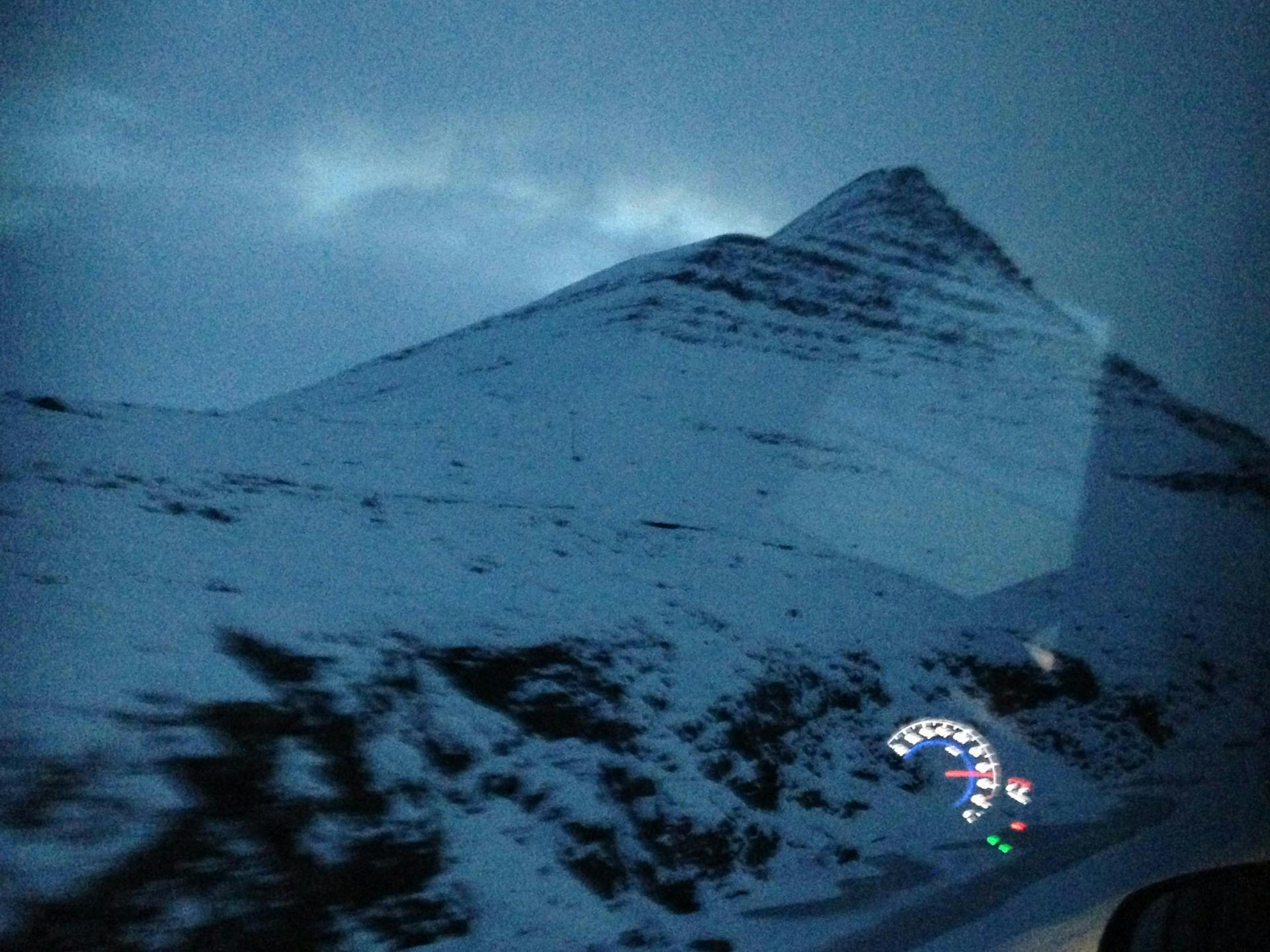 Taken by Pearl Jackson-Payen
Taken by Pearl Jackson-Payen
The Westfjords are the northwestern, most remote part of Iceland. A lot of people do not take time to explore them as the popular ring road circling Iceland doesn’t extend in this direction. The Westfjords have a very unique feeling of desolation and immense wilderness. A few towns and farms are dotted beside the road, nestled in the feet of mountainous fjords, but aside from these settlements it is vast and empty.
In the summer, this region is great for whale spotting. I was told a story by a friend from Ísafjörður about two men from the Westfjords who sailed out in a boat and came across a whale, who was stuck in a net, and unable to move. One of the men decided to climb out of the boat and onto the whale’s back to try and free it. It stayed completely still, allowing itself to be freed. After he finally untied it the fisherman climbed back into their boat and sailed into shore, while the whale followed joyfully behind for a while.
Close encounters with whales are not uncommon in the Westfjords. All fisherman who are based here have stories of sightings.
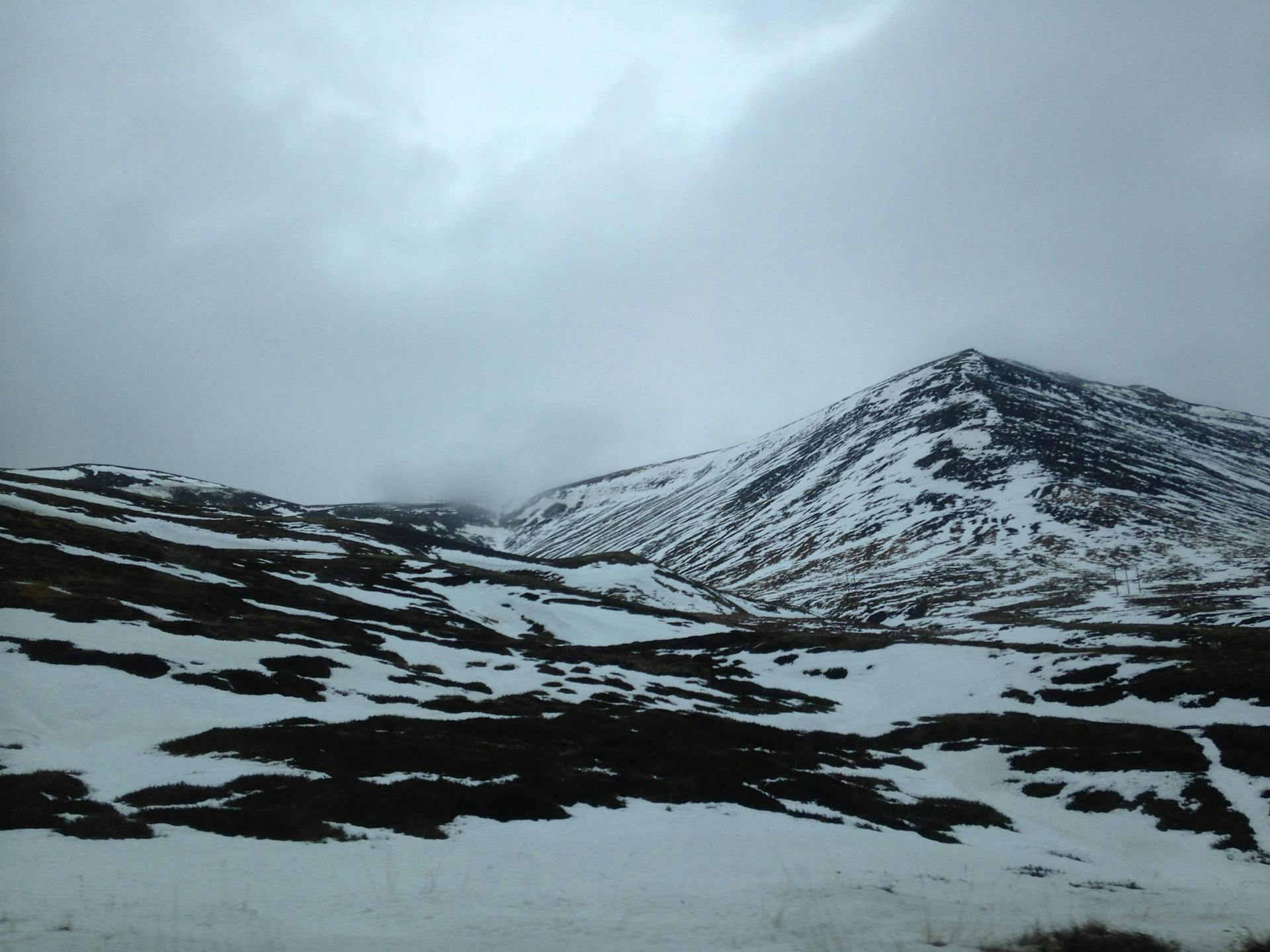 Driving through the fjords. Taken by Pearl Jackson-Payen
Driving through the fjords. Taken by Pearl Jackson-Payen
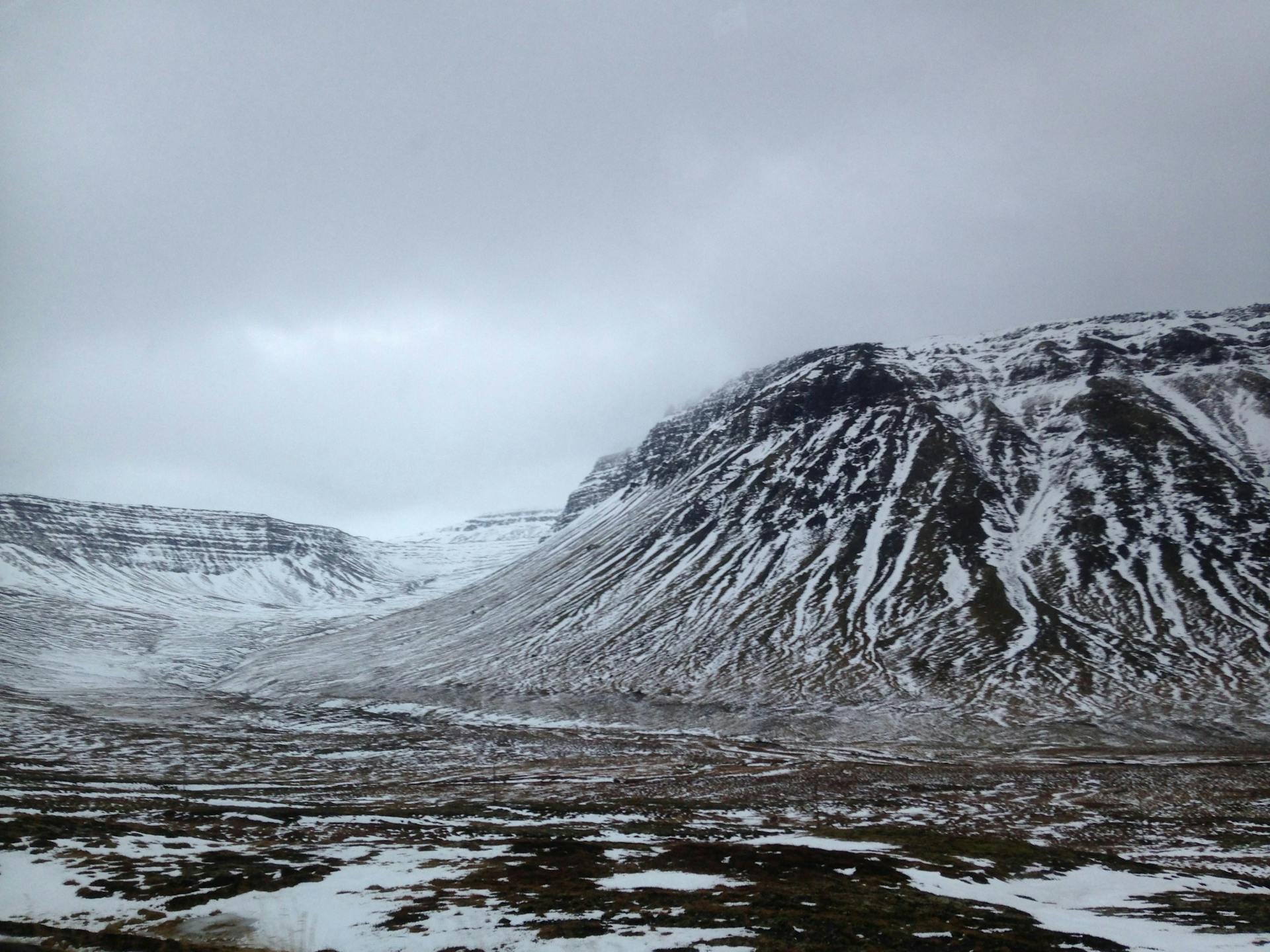 Taken by Pearl Jackson-Payen
Taken by Pearl Jackson-Payen
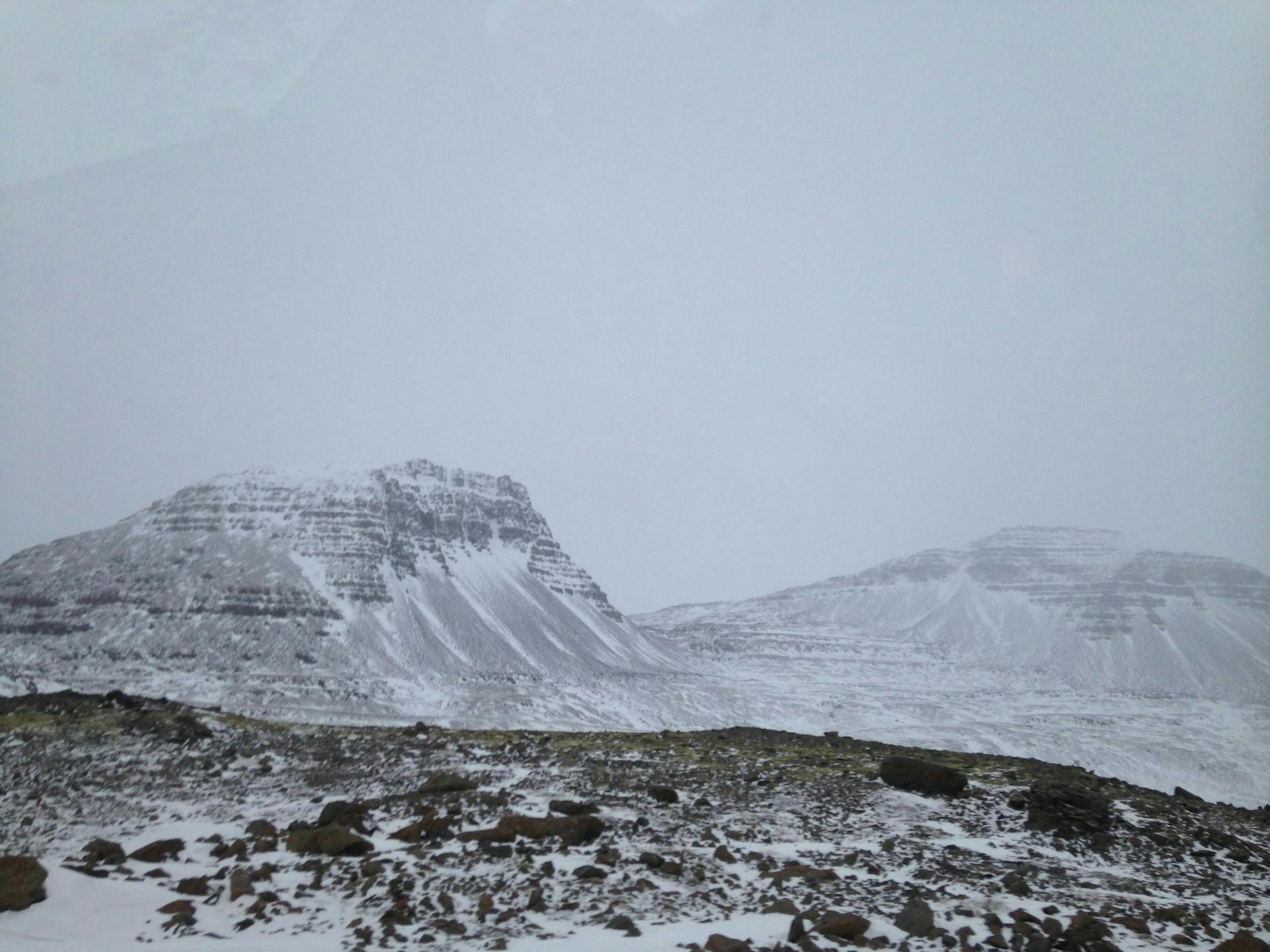 Taken by Pearl Jackson-Payen
Taken by Pearl Jackson-Payen
I visit in November, and the days are shortening. Night begins to envelop land at around three, and settles there until nine or ten the next day. Iceland is turning wild and dangerous, with darkness and blizzards and huge winds.
In winter the Westfjords are white and silent and vast. Snow thickly covers mountains that look like elemental slumbering mammals. The roads are icy and dangerous, so we drive slowly.
Súðavík
In Súðavík, I regard the opposite fjord. A huge yellow full moon rises up from behind the mountain and around the sky, whitening as it goes.
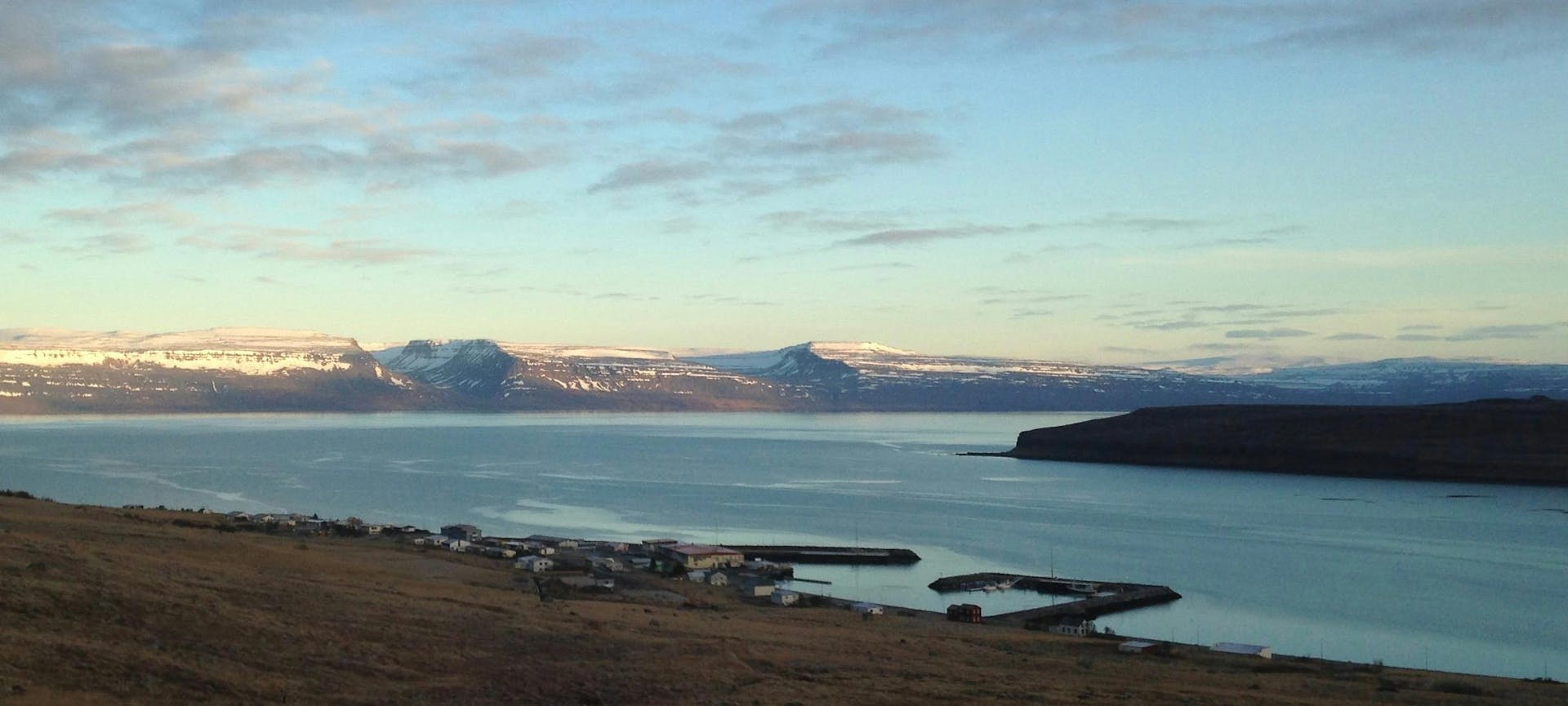 Súðavík from above. Taken by Pearl Jackson-Payen
Súðavík from above. Taken by Pearl Jackson-Payen
Súðavík is a small fishing village along the west coast of Álftafjörður, in the northwest of the fjords. It is twenty minutes before Ísafjörður by car. On January 16th in 1995 a massive avalanche destroyed much of the town. Buildings were destroyed, fourteen people killed, and twelve seriously injured. The town was rebuilt in a safer area, though houses in the old town are sometimes rented out to tourists in the summertime.
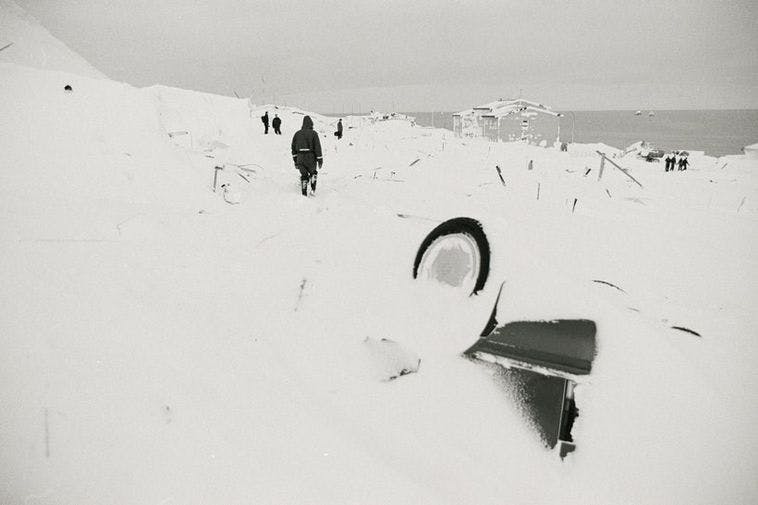 Photo taken on the day of the avalanche
Photo taken on the day of the avalanche
Súðavík’s most popular attraction is its Arctic Fox Centre. Two blue arctic foxes called Ingi and Móri live in an enclosure here. After their parents had been killed as part of a legalised arctic fox hunt in 2015, they were brought to and raised in the fox centre. There is an exhibition, ran by researchers who and are ready to talk to any visitors about the foxes, and film screenings.
Several hikes surround the Súðavík region, some leading up into the mountains behind the town. My favourite of these hikes passes around the Valagil ravine, where there are several spectacular waterfalls amidst strange volcanic figurations.
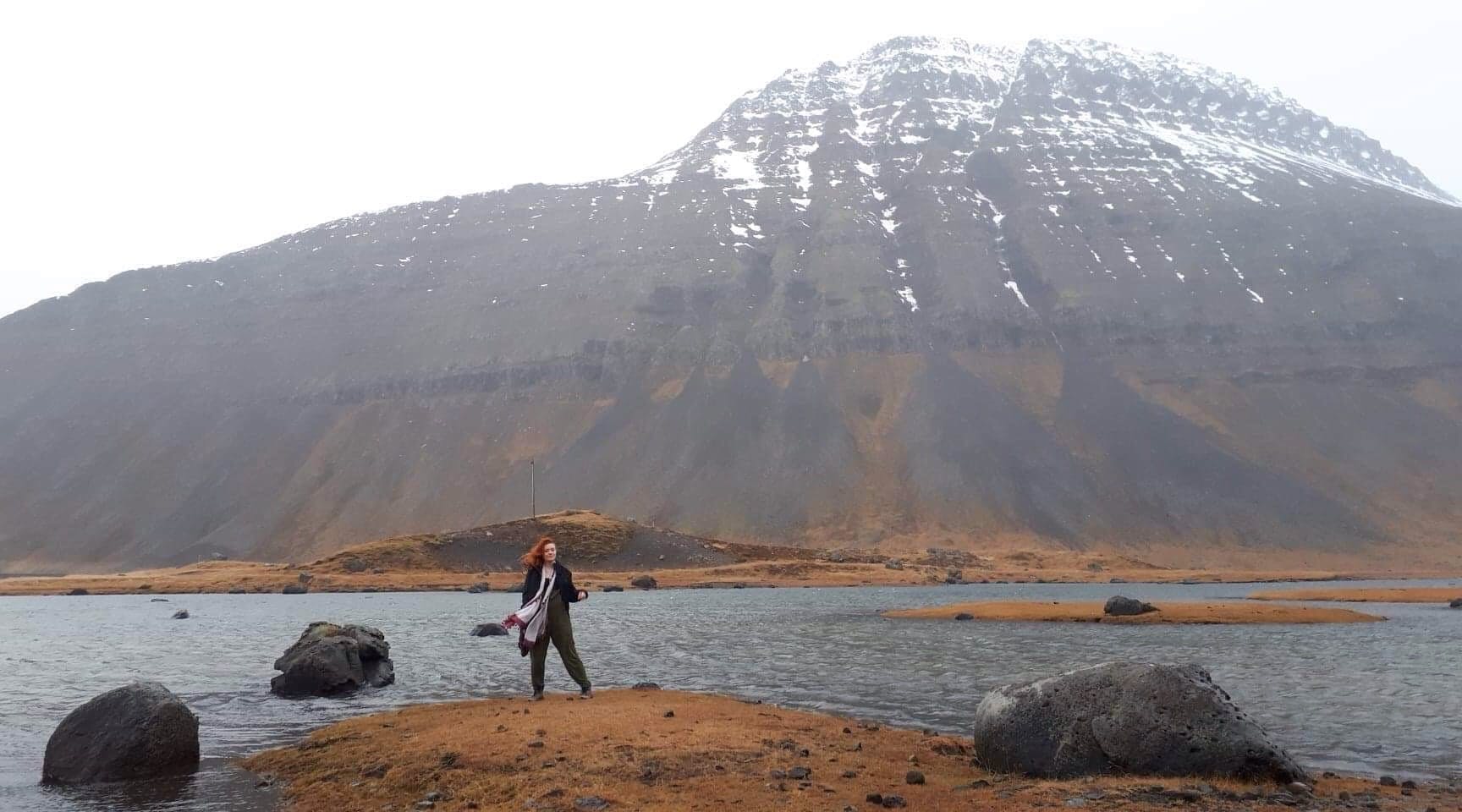 Author at the entrance of the Valagil ravine
Author at the entrance of the Valagil ravine
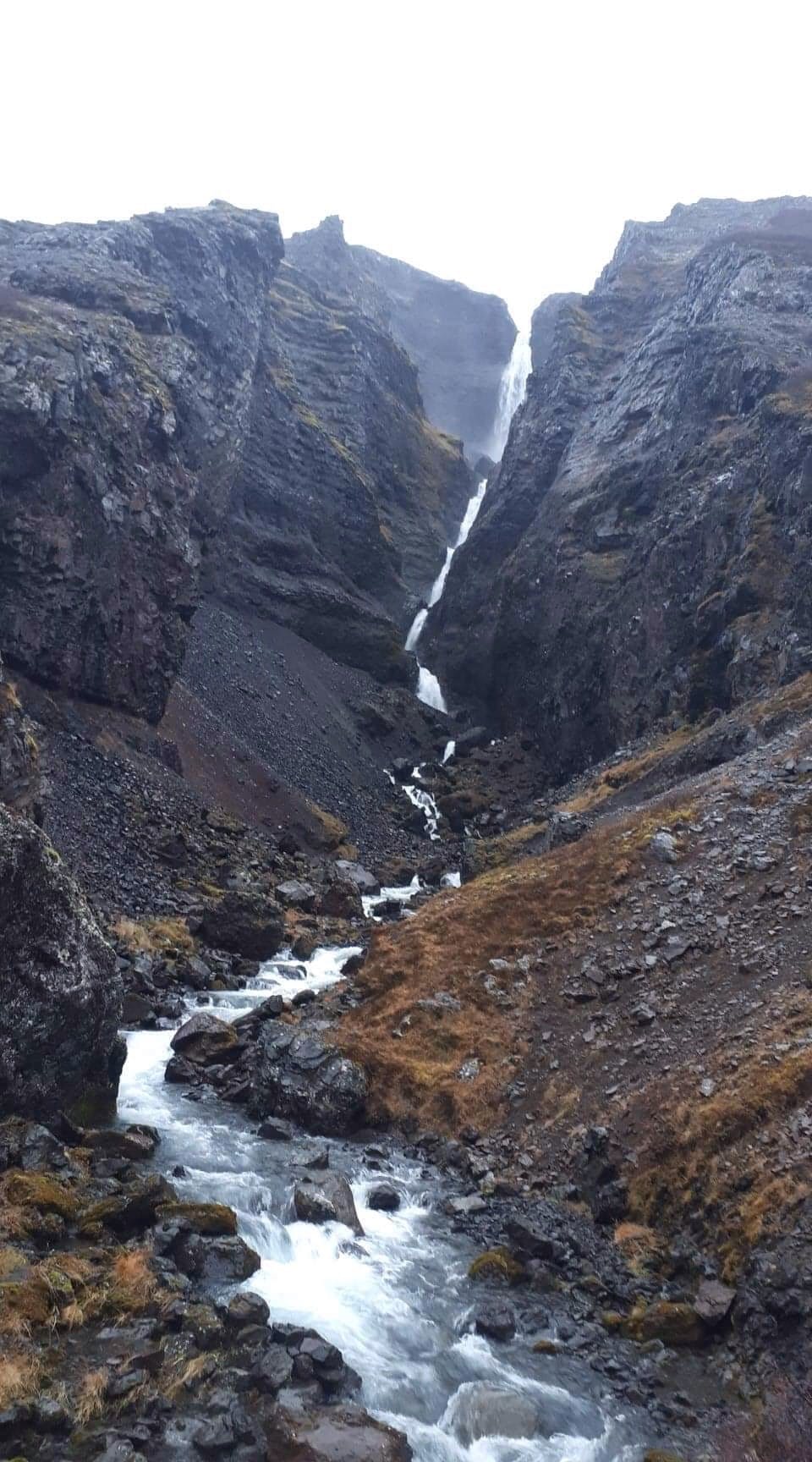 The Valagil ravine. Taken by Pearl Jackson-Payen
The Valagil ravine. Taken by Pearl Jackson-Payen
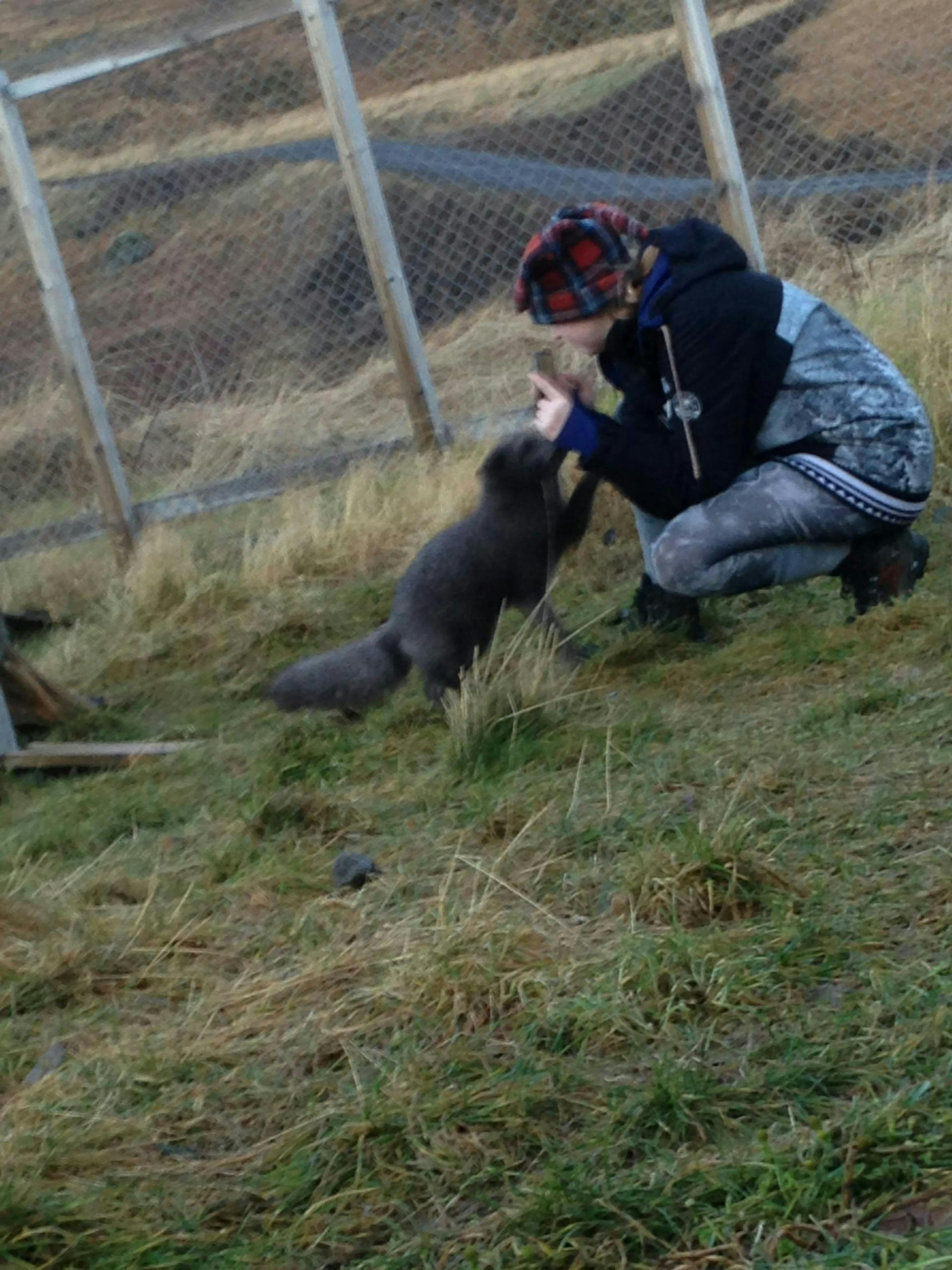 A researcher, Clare, feeding one of the arctic foxes at the centre. Taken by Pearl Jackson-Payen
A researcher, Clare, feeding one of the arctic foxes at the centre. Taken by Pearl Jackson-Payen
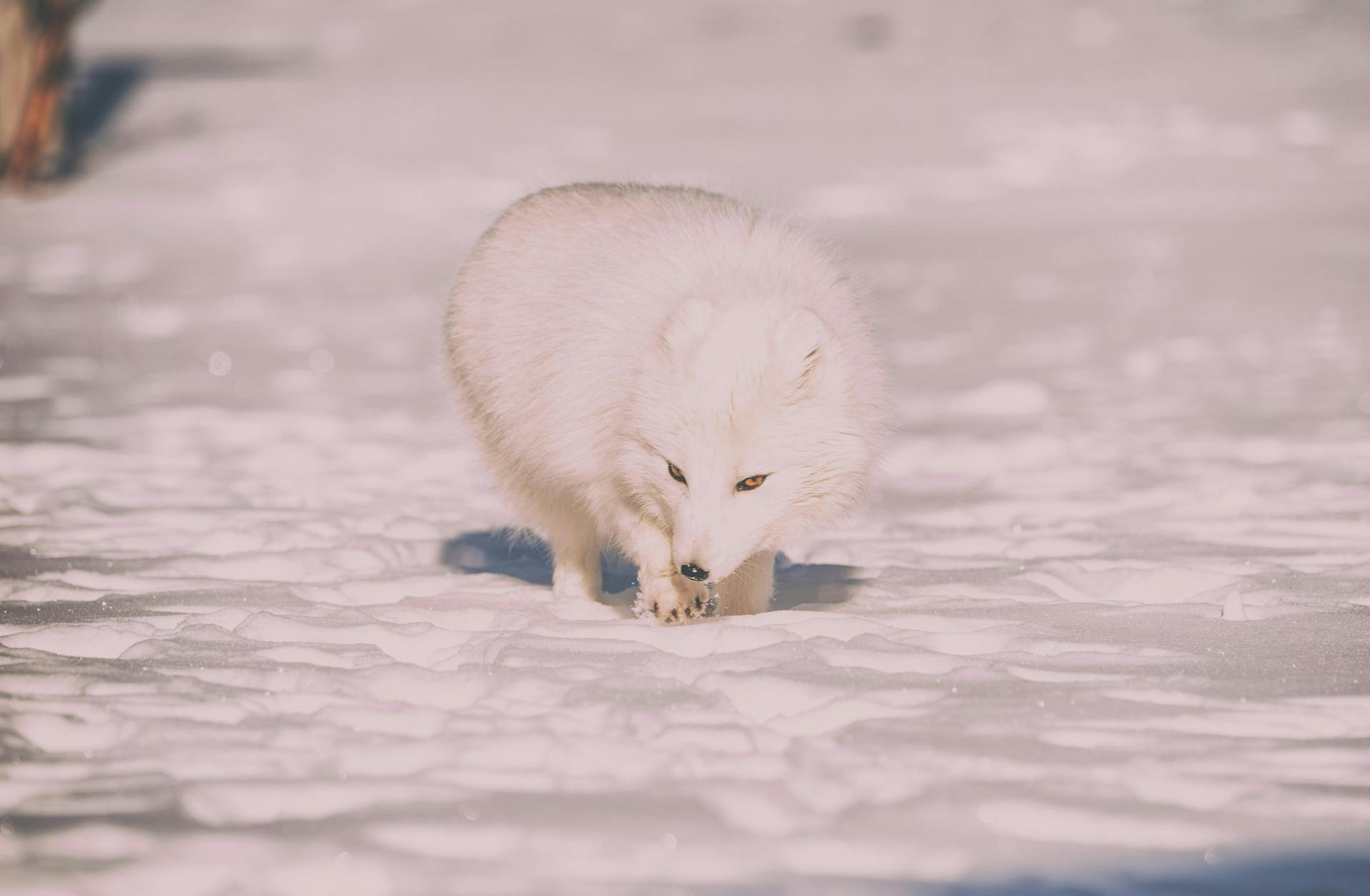 An arctic fox in its white winter coat. Unsplash/Jonathan Pie.
An arctic fox in its white winter coat. Unsplash/Jonathan Pie.
Ísafjörður
In Ísafjörður I feel like I am on the edge of the world. Ísafjörður is the biggest town in the Westfjords. It is an elemental place, flanked on every side by huge hulking mountains, and met by the sea in three directions. The air is sharp and clean and always smells like the ocean. In Ísafjörður you can find everything you need to live.
There are two bakeries, two pizza places, two supermarkets, two bars, two Thai restaurants, an airport, and a university centre. It is a beautiful town, settled on the edge of immense wilderness.
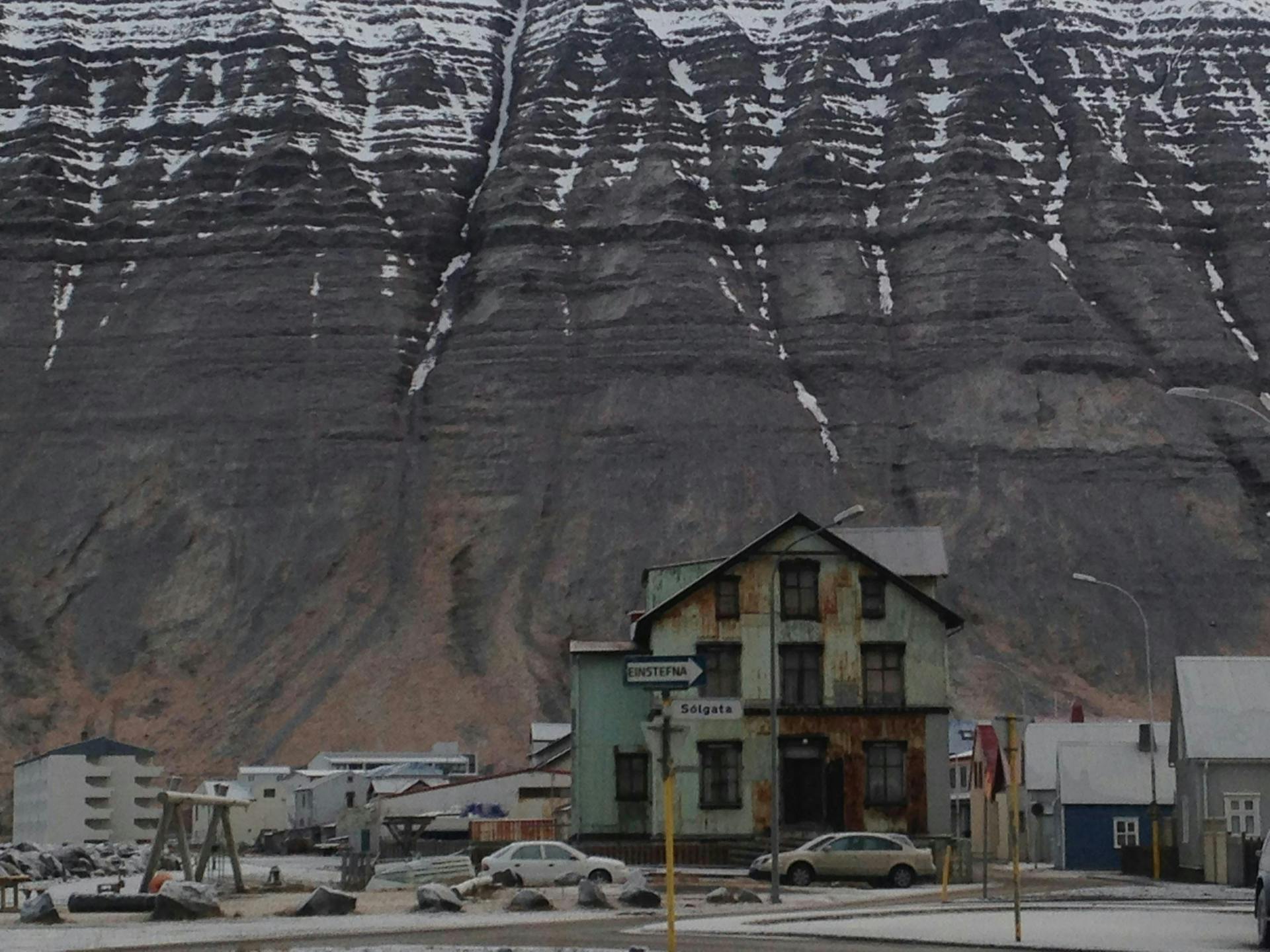 Ísafjörður. Taken by Pearl Jackson-Payen
Ísafjörður. Taken by Pearl Jackson-Payen
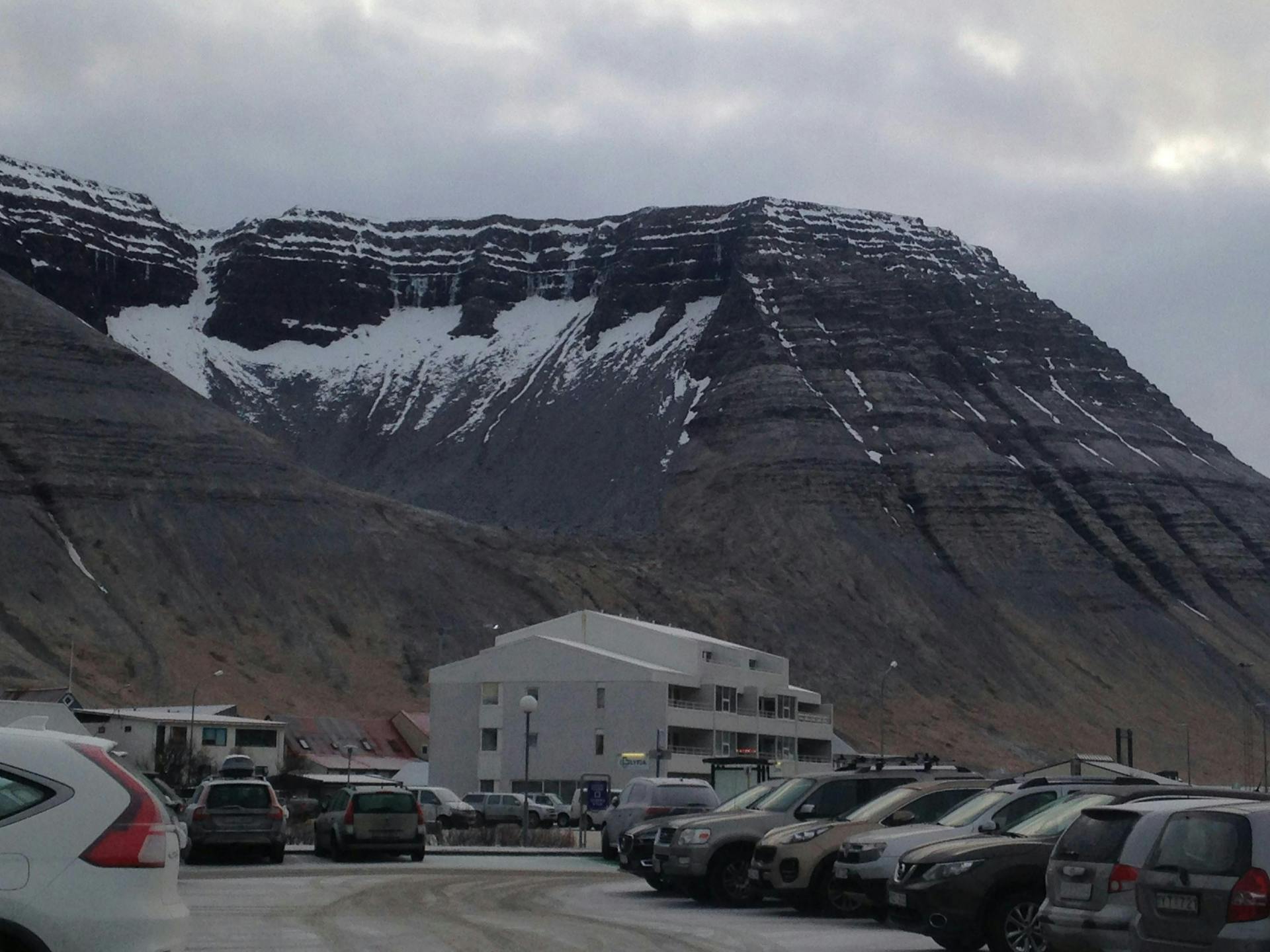 Ísafjörður. Taken by Pearl Jackson-Payen
Ísafjörður. Taken by Pearl Jackson-Payen
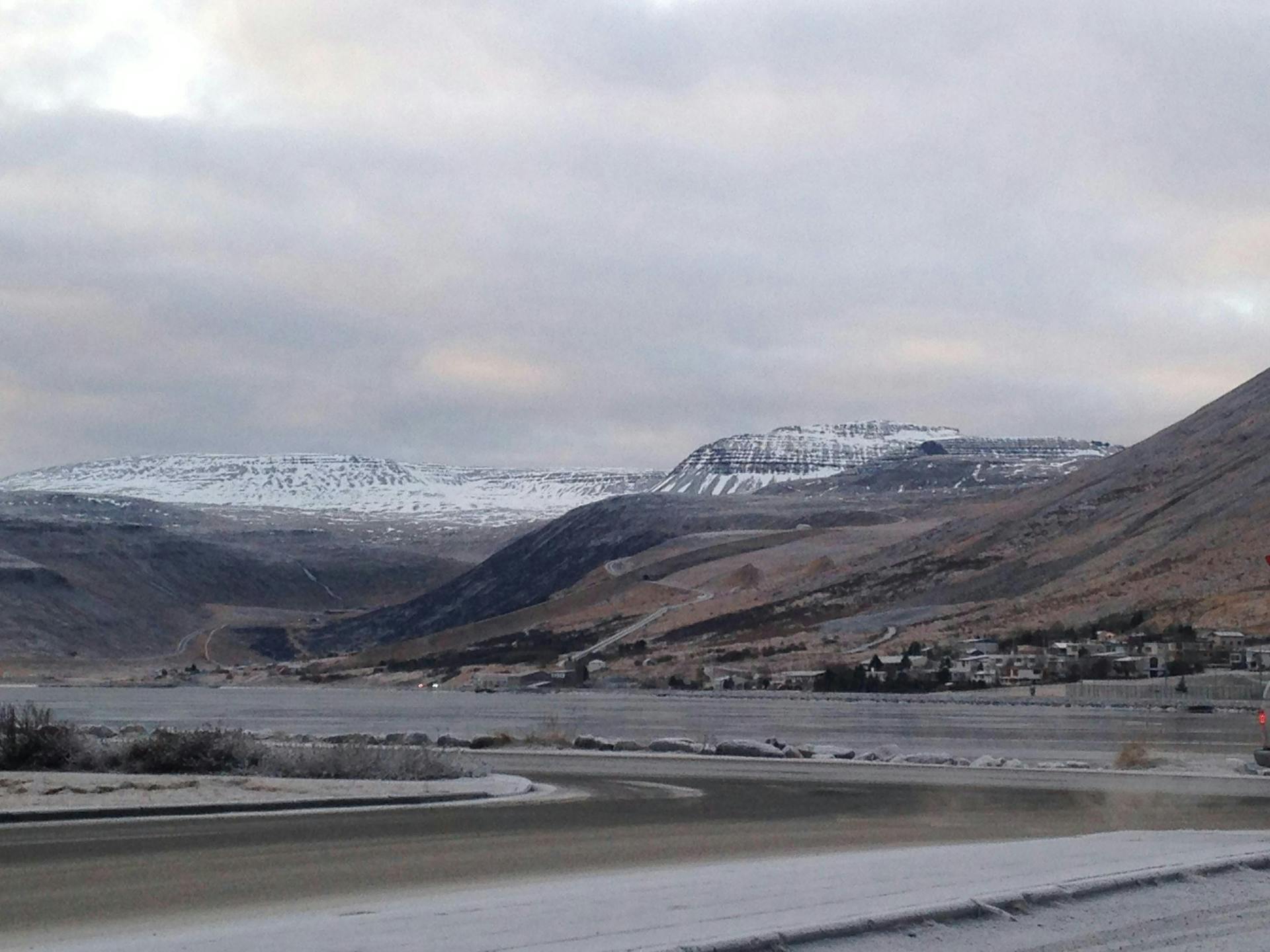 Ísafjörður. Taken by Pearl Jackson-Payen
Ísafjörður. Taken by Pearl Jackson-Payen
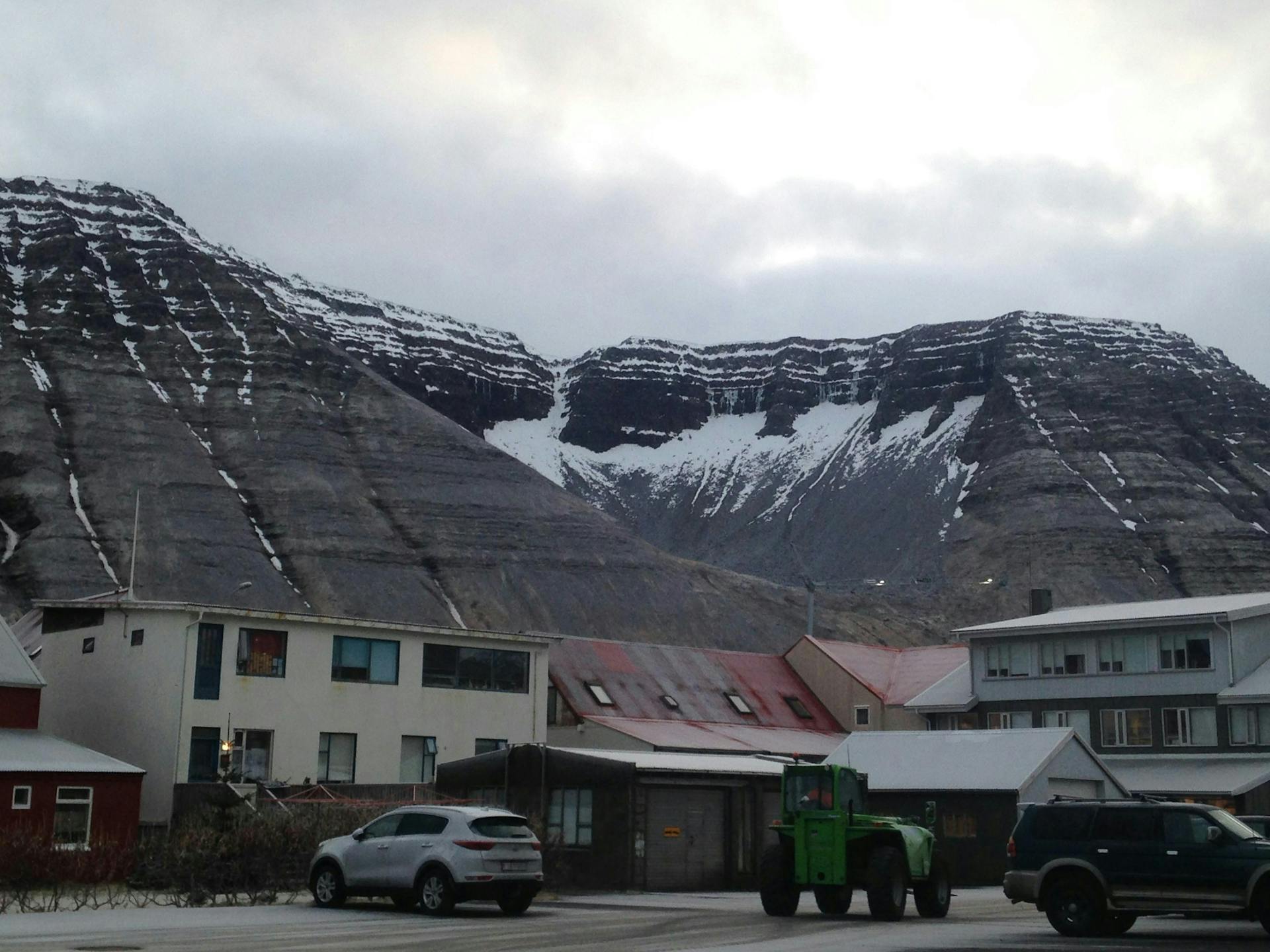 Ísafjörður. Taken by Pearl Jackson-Payen
Ísafjörður. Taken by Pearl Jackson-Payen
Dynjandi
Dynjandi is a monumental waterfall in the Westfjords. Taking a short hike from the road leads up past a host of beautiful waterfalls, each increasing in size, leading up to Dynjandi, the largest.
The cold here is furious, and almost burns. It forces water compact into solid form.
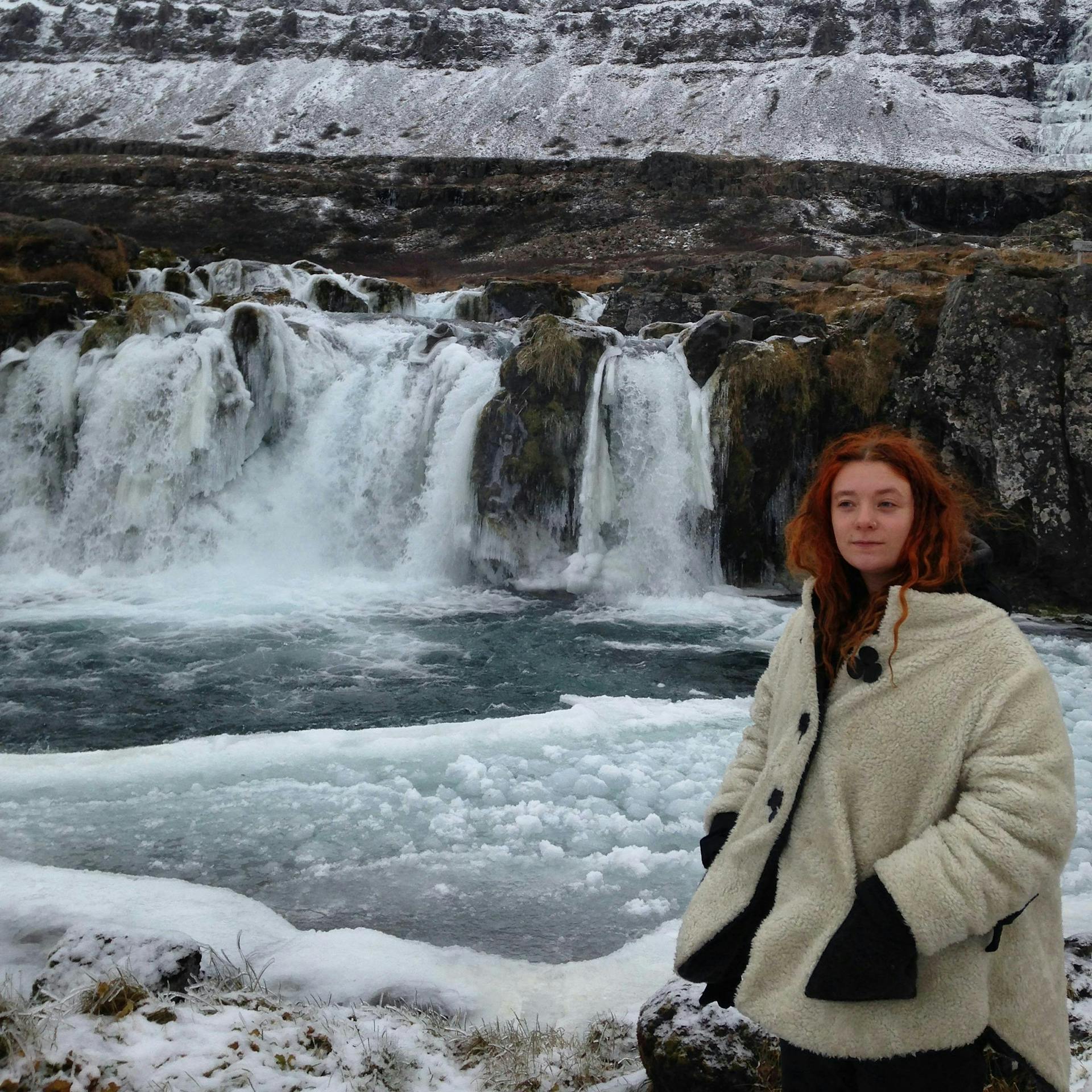 The author at Dynjandi
The author at Dynjandi
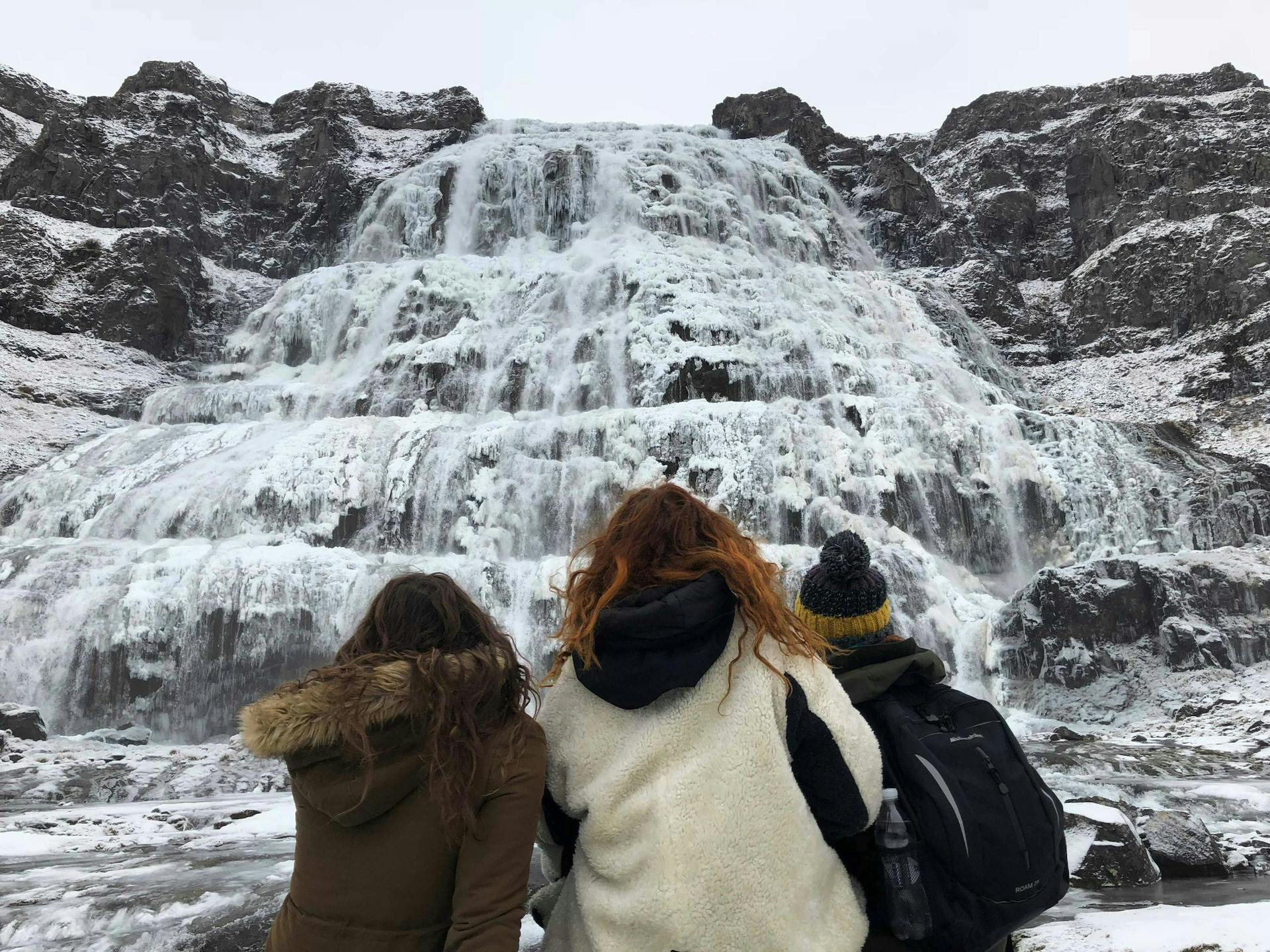 The author and friends at Dynjandi
The author and friends at Dynjandi
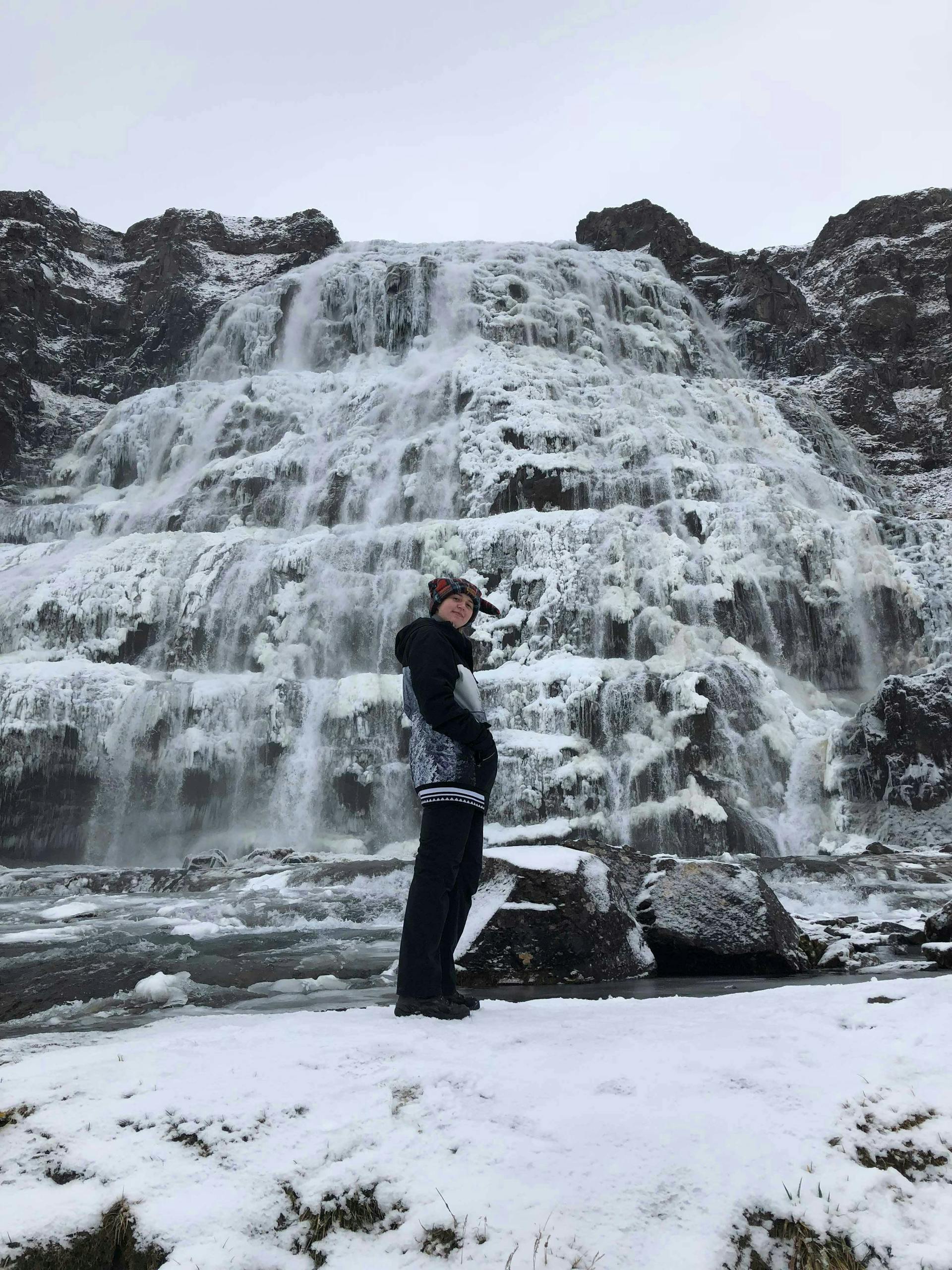 The author's friend beneath Dynjandi
The author's friend beneath Dynjandi
One evening, as we drove along the route 50 between Dynjandi and Ísafjörður, and night began to settle, a blizzard formed around us. The roads were icy and the air thick and white. On the top of a mountain our car suddenly stopped. Stuck in a white out, in darkening air, on the edge of a huge mountain drop, we got out and tried to dig the car out from the fast thickening snow so we could continue.
But this was no use, the car could no longer move. A truck driver came up from the other side of the mountain and stopped, warning us that to continue onwards in the direction he came from was too dangerous.
We learn we are stranded atop the deadliest mountain in Iceland for avalanches, having claimed at least two hundred lives. But we could not move forward, finding ourselves stuck at the top with several other vehicles. Snow thickened, the air was like a white wall, the world beyond it invisible. We were aware of the huge drop on one side of the road. A visceral feeling of danger hovered over the mountain.
Mountain rescue refused to send anyone to aid us in case of avalanches, and we were instructed to drive slowly back the way we came, and to stay the night on this side of the fjord. Finally making it to the bottom is a huge relief, and we were given a place to stay for the night in a nearby town. The next day the mountain is cleared and everyone who was stranded by the blizzard is allowed to continue onwards to Ísafjörður.
Make sure to check road.is and vedur.is before travelling on potentially precarious routes. The roads in the Westfjords can be dangerous, especially in the winter months. It is necessary to have a sturdy car, preferably a 4x4.
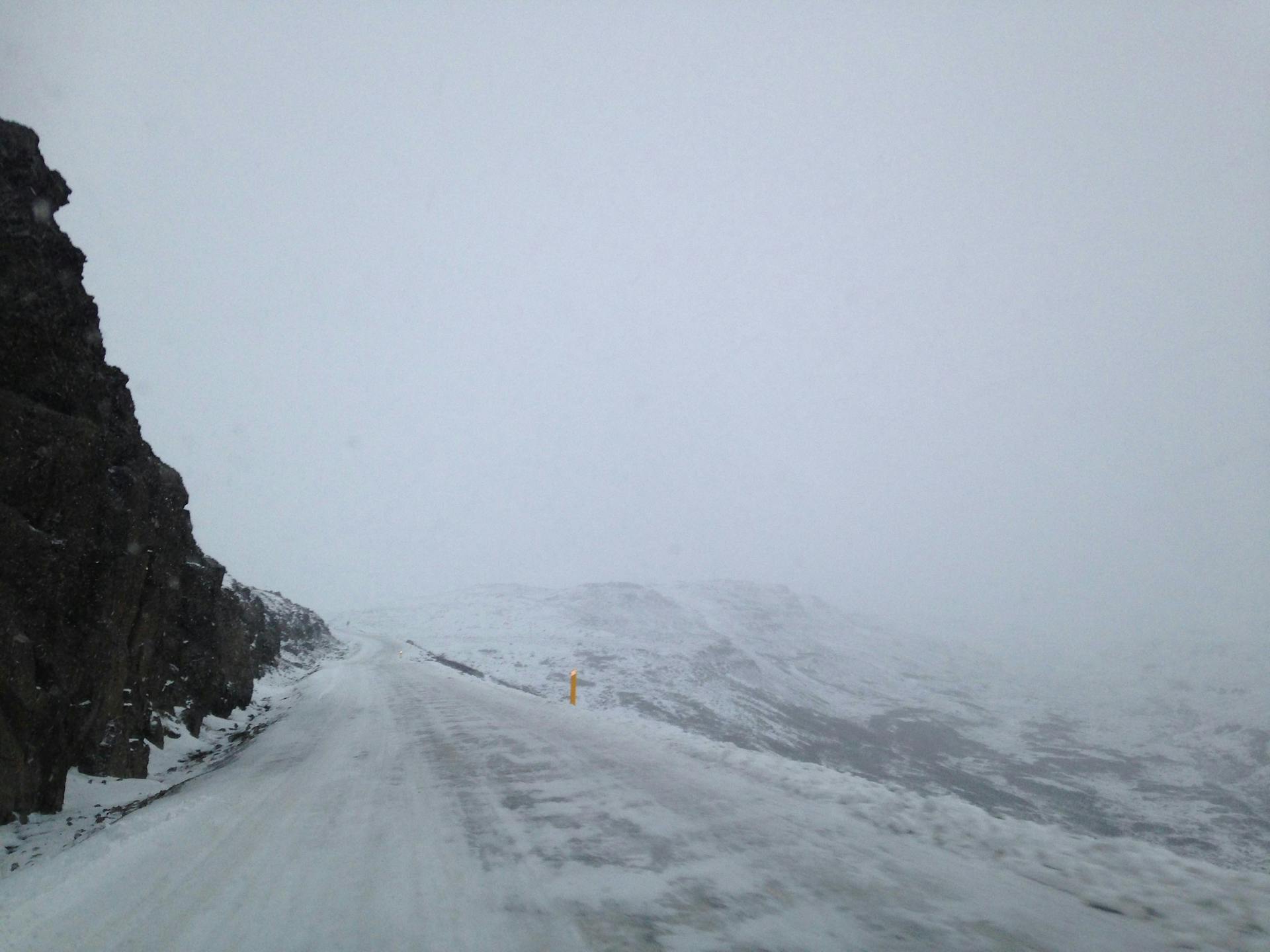 Steep and winding mountain roads. Taken by Pearl Jackson-Payen
Steep and winding mountain roads. Taken by Pearl Jackson-Payen
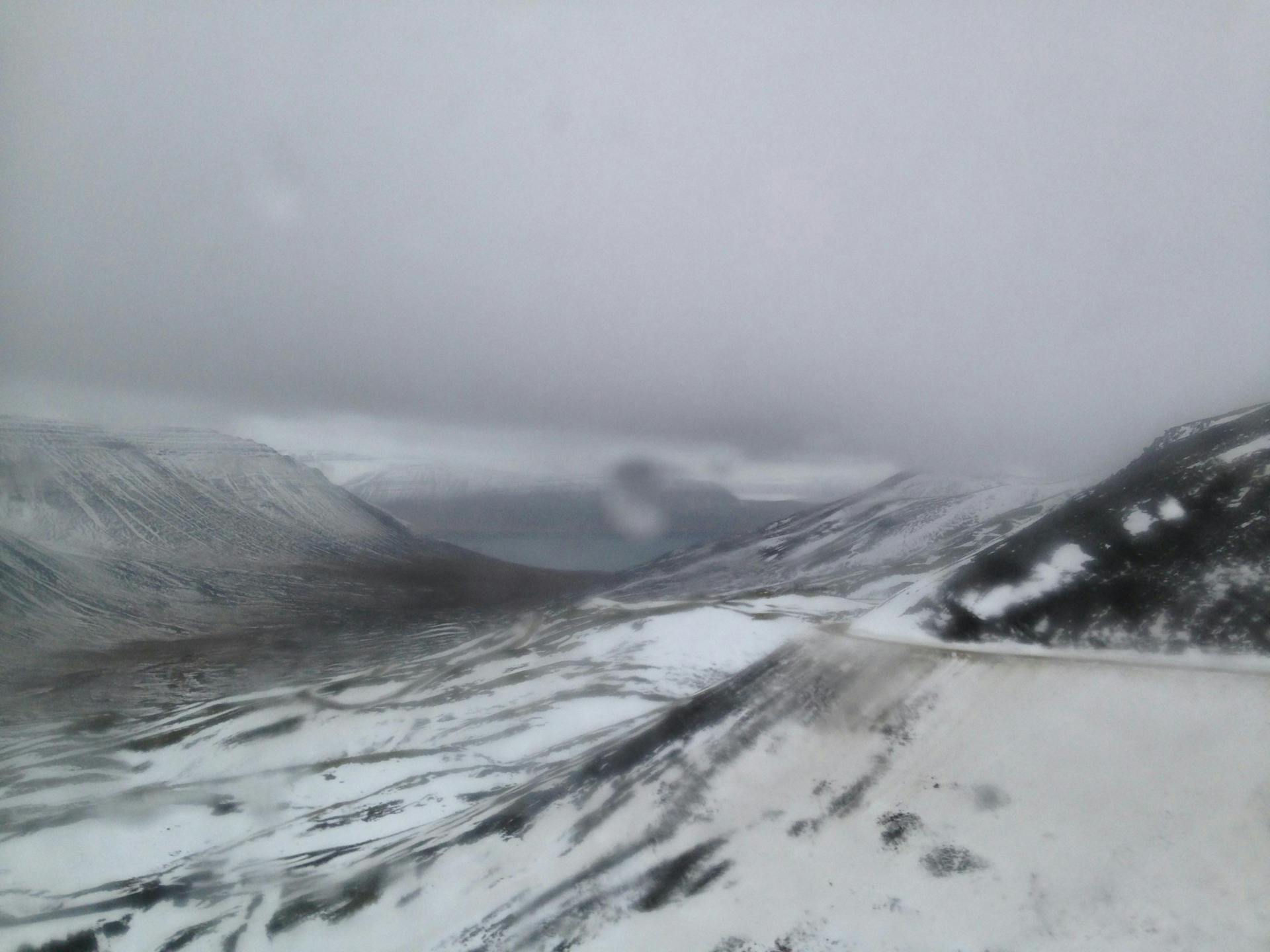 Winding mountain roads. Taken by Pearl Jackson-Payen
Winding mountain roads. Taken by Pearl Jackson-Payen
Activities in the Westfjords
This region is plentiful in hot springs. Here are some articles about hot springs in the south of the region:
- Westfjords of Iceland: 4 Day "Hot Pools and Hiking" Itinerary
- Hellulaug: A Unique Geothermal Hot Pool in the Westfjords
- The Krosslaug Geothermal Pools in the Westfjords
A seal watching spot, designed by local landscape architect Hildur Aranrdóttir, is a great place to break up the long drive through the fjords and watch Icelandic seals in their natural habitat.
In Hólmavík there is a museum dedicated to Icelandic Sorcery & Witchcraft. The museum depicts the history of sorcery from the settlement period.
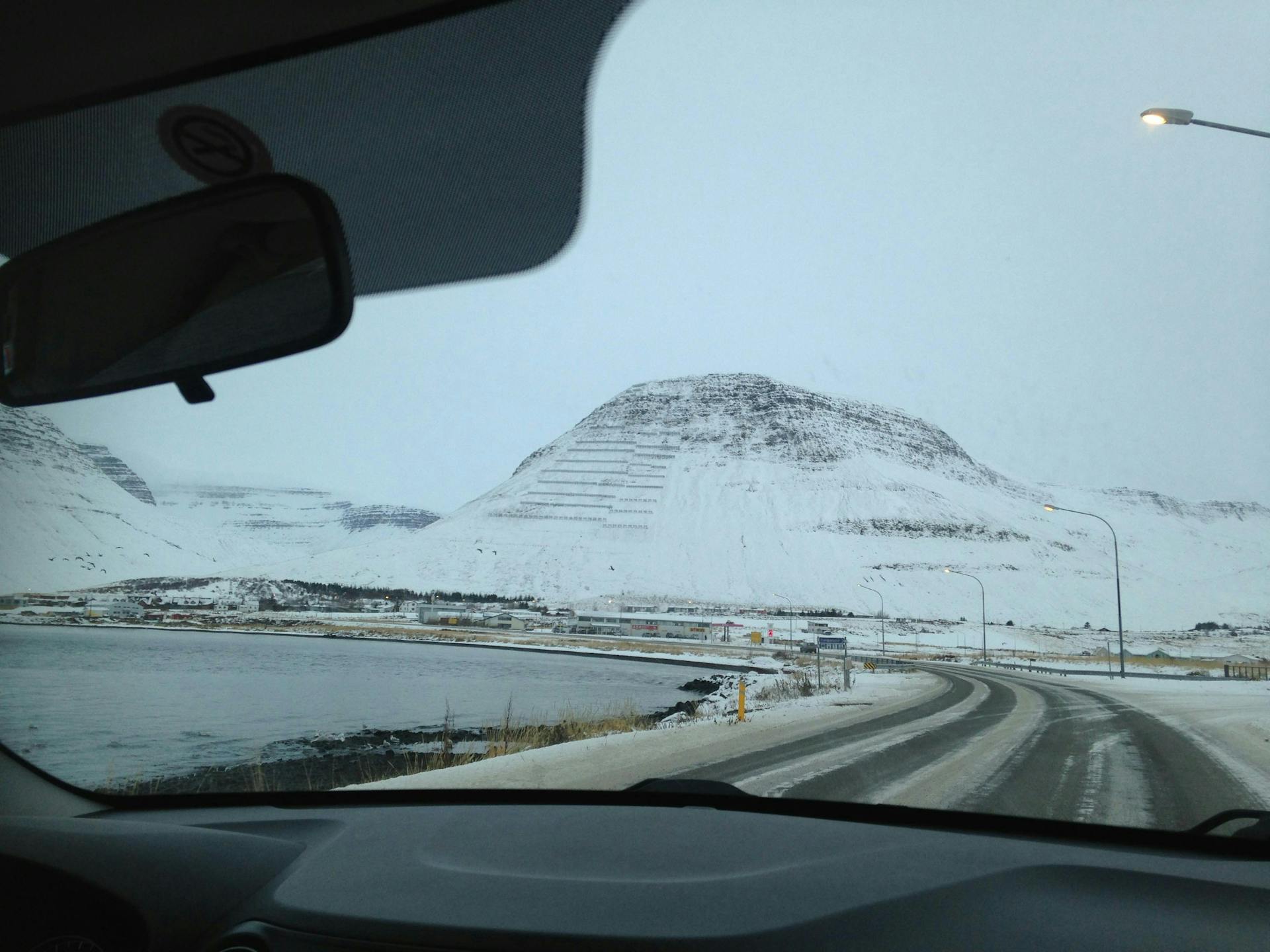 Approaching Ísafjörður. Taken by Pearl Jackson-Payen
Approaching Ísafjörður. Taken by Pearl Jackson-Payen
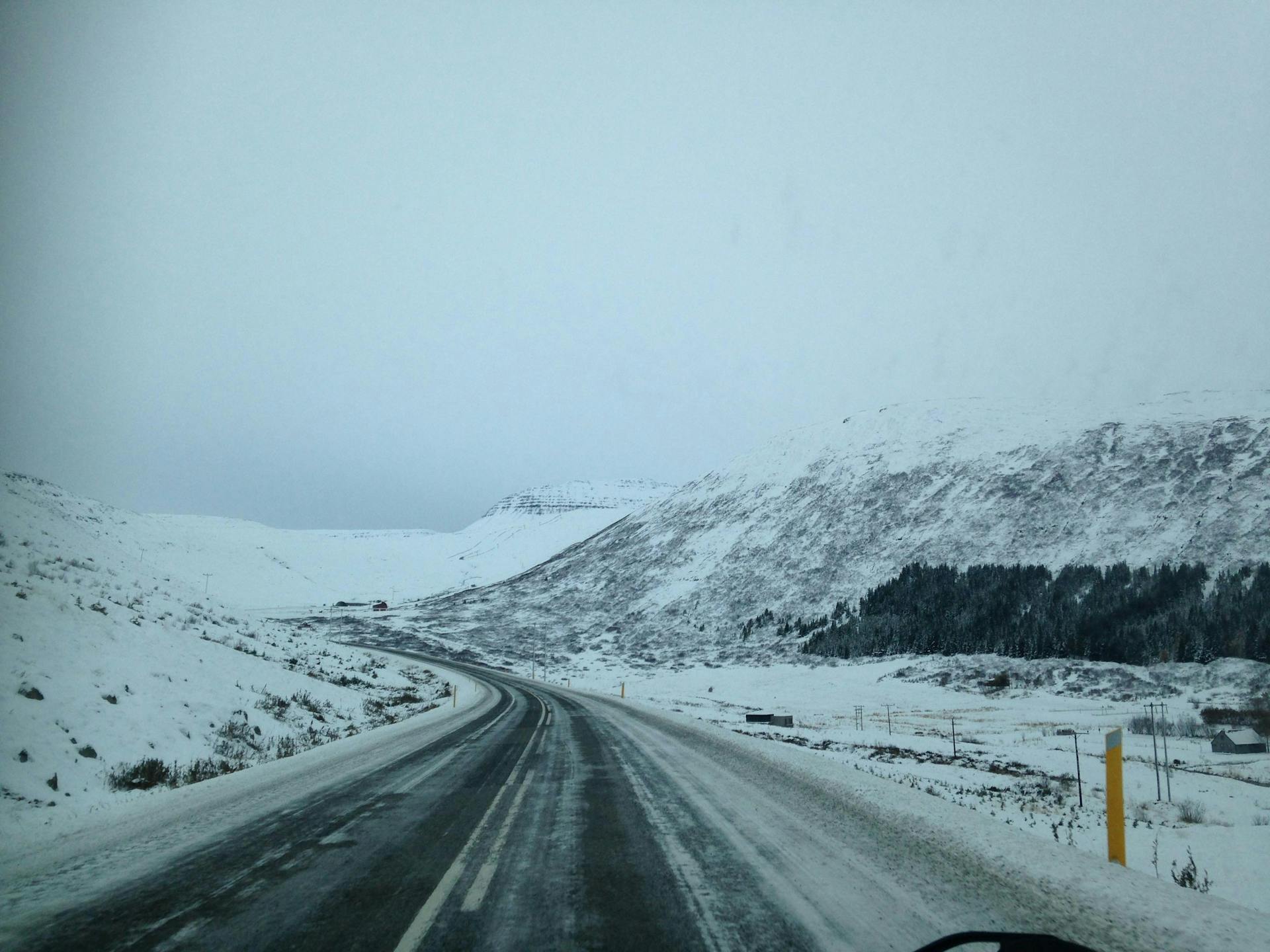 Driving through the fjords. Taken by Pearl Jackson-Payen
Driving through the fjords. Taken by Pearl Jackson-Payen
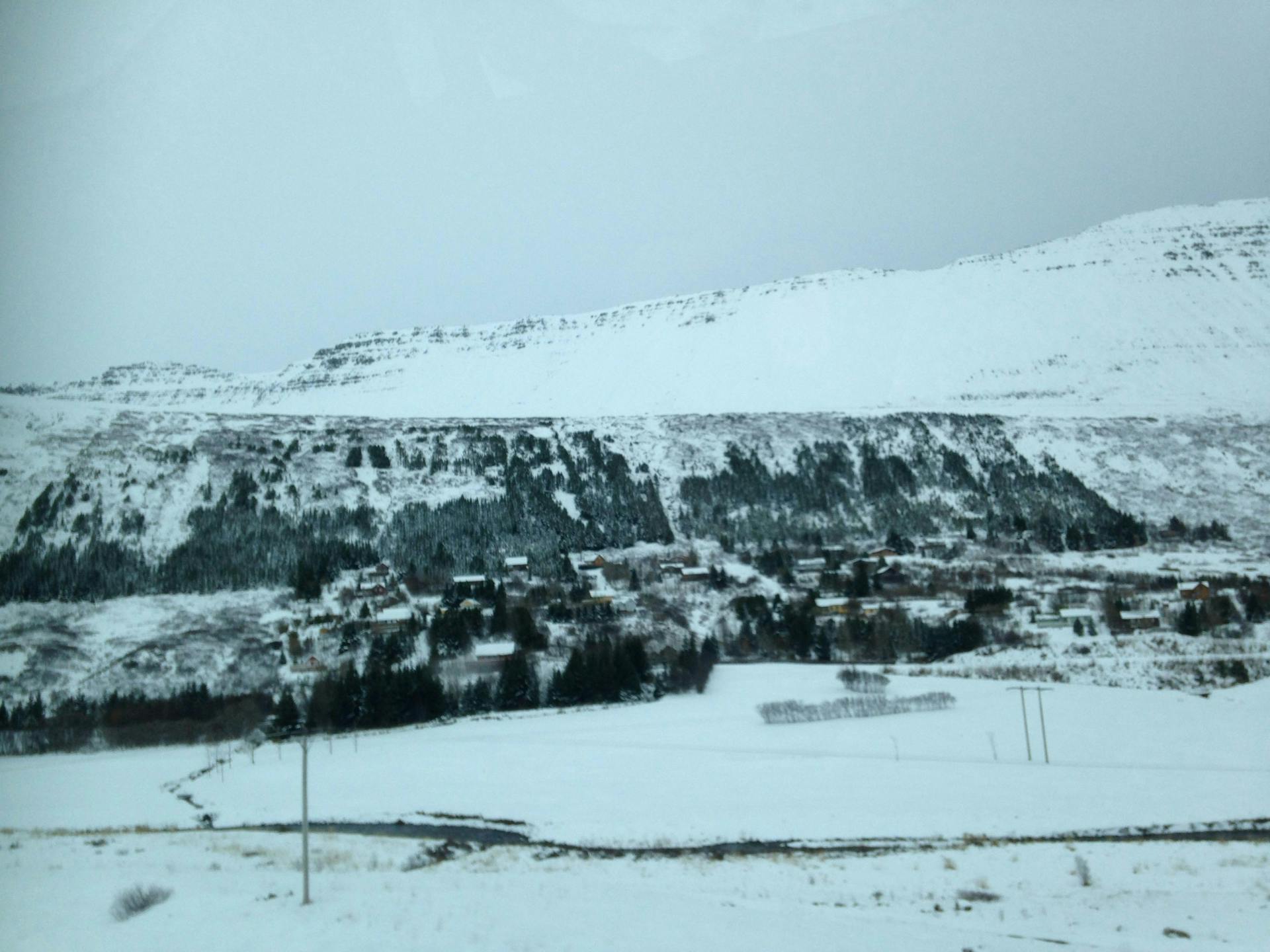 Ísafjörður houses. Taken by Pearl Jackson-Payen
Ísafjörður houses. Taken by Pearl Jackson-Payen
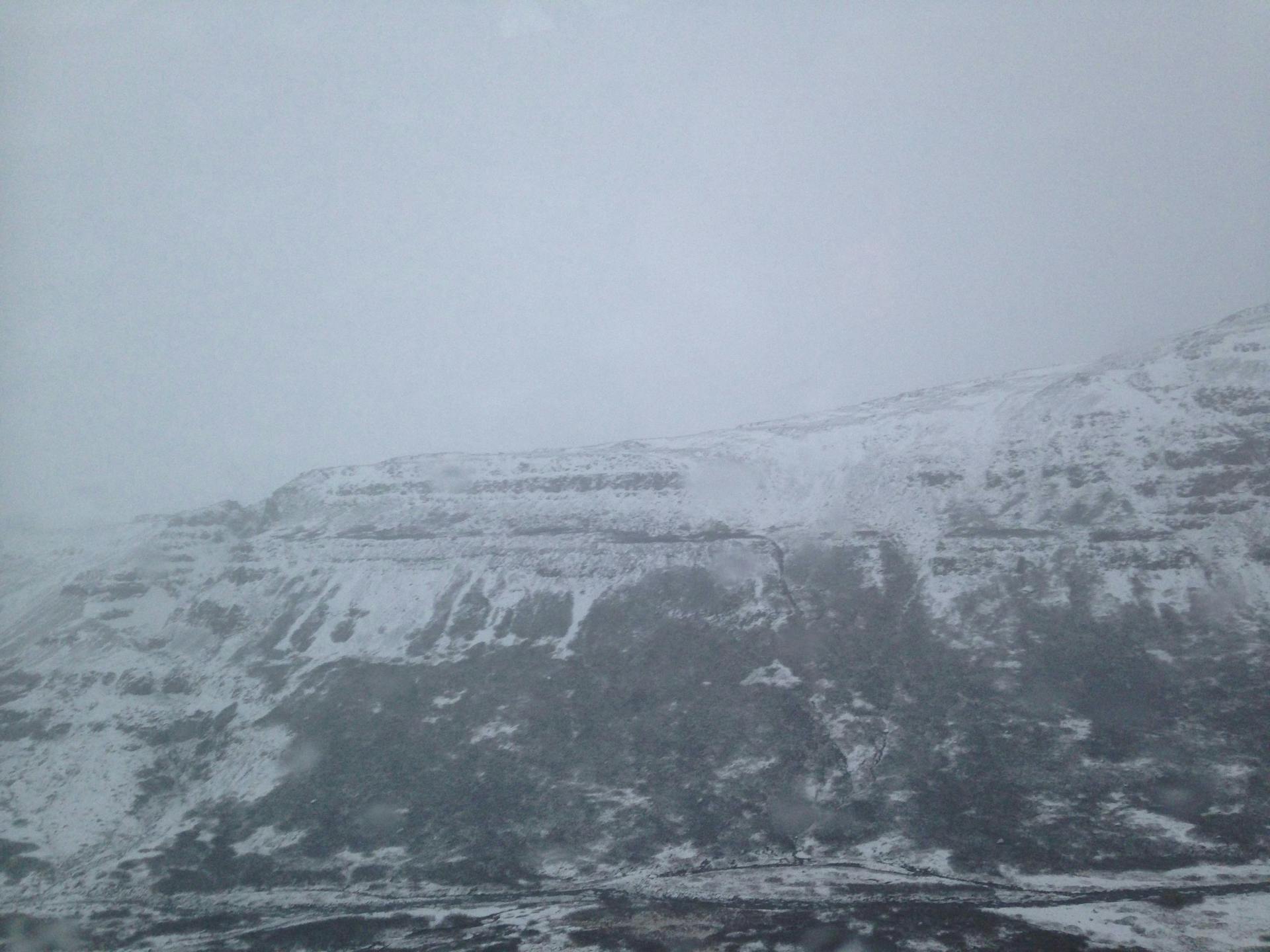 Misted mountain faces. Taken by Pearl Jackson-Payen
Misted mountain faces. Taken by Pearl Jackson-Payen
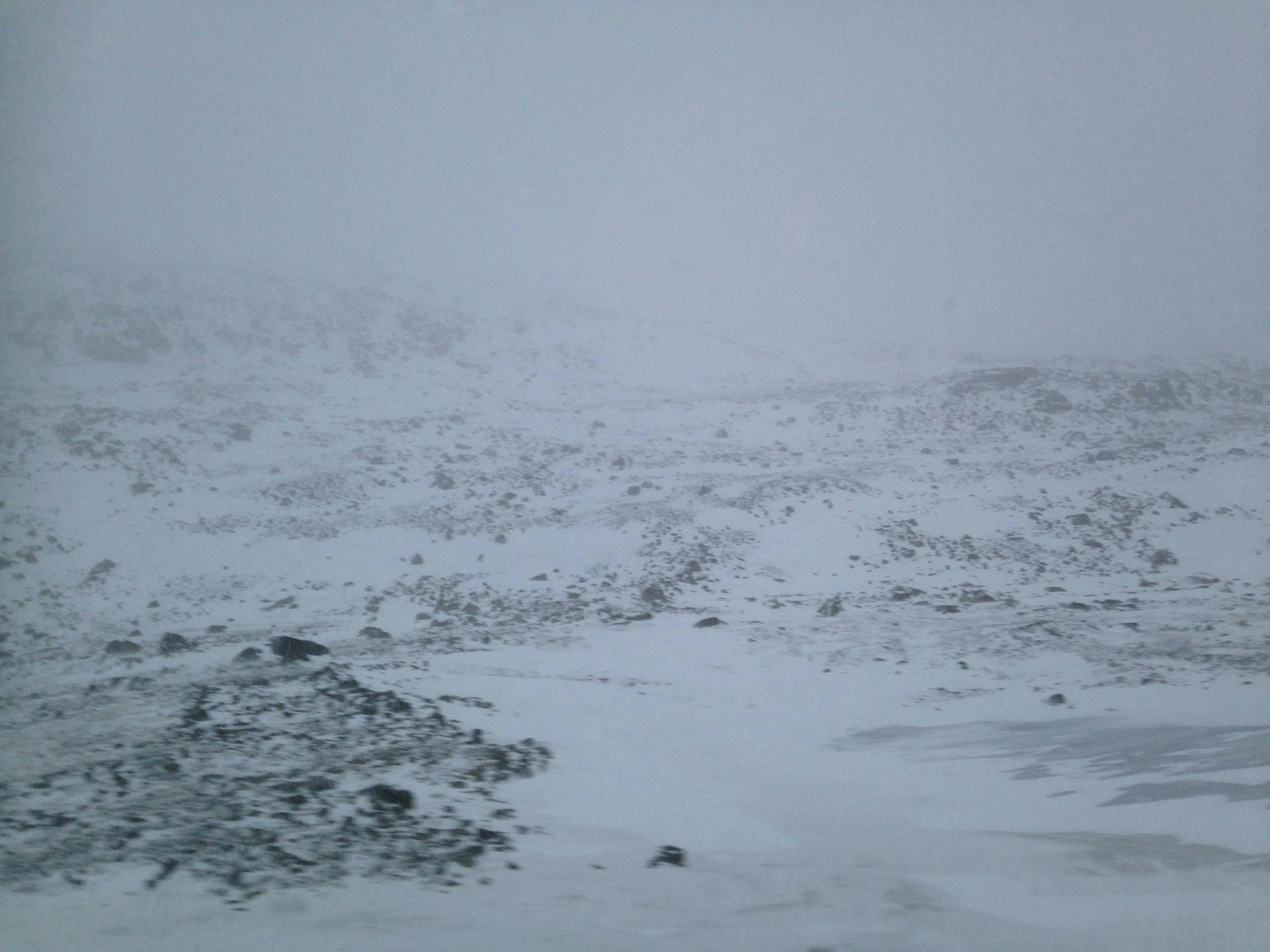 A blizzard forming. Taken by Pearl Jackson-Payen
A blizzard forming. Taken by Pearl Jackson-Payen
The Westfjords are vast and empty and desolate. These mountains breathe slowly, and my mind spreads over them, reaching over form, gliding past sea, nestling into holes in the earth.
Sharing is caring!

